
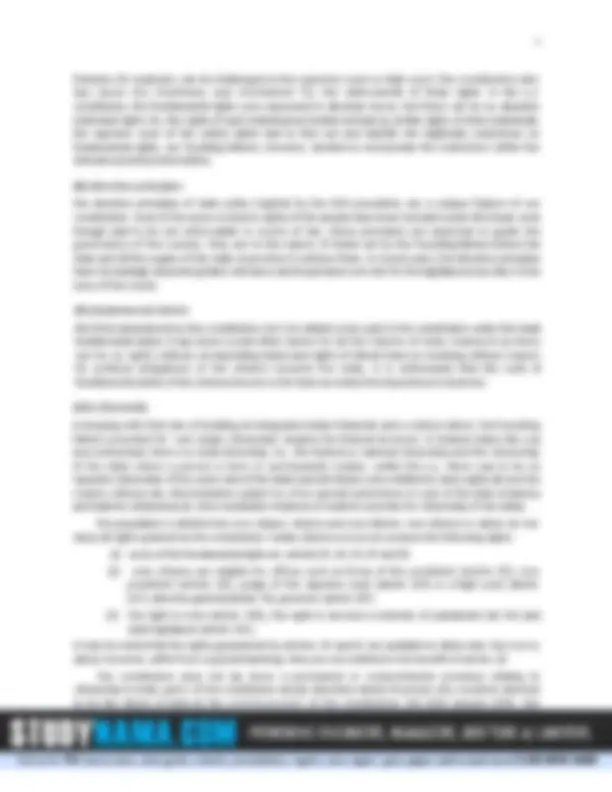
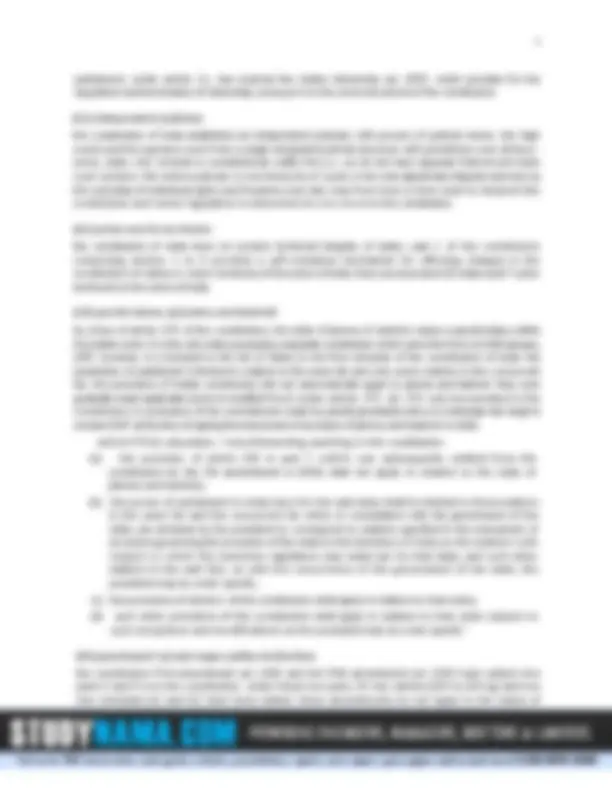
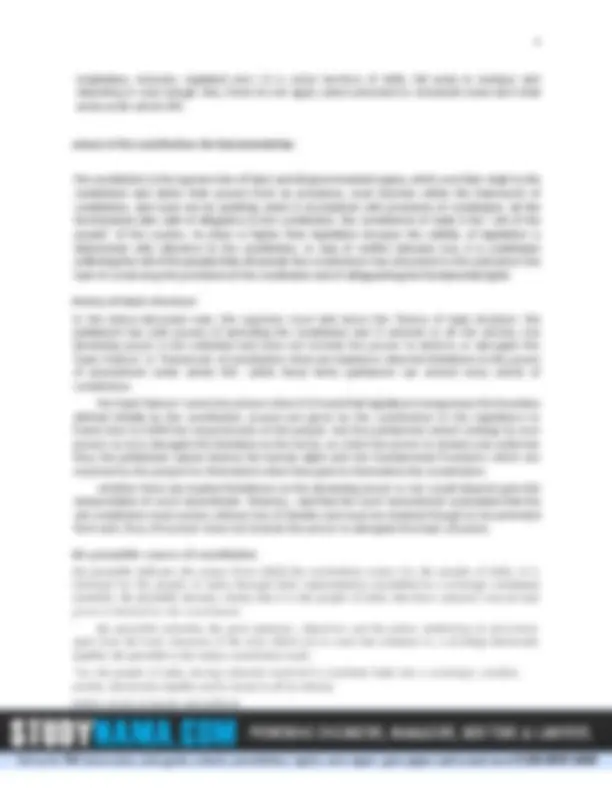
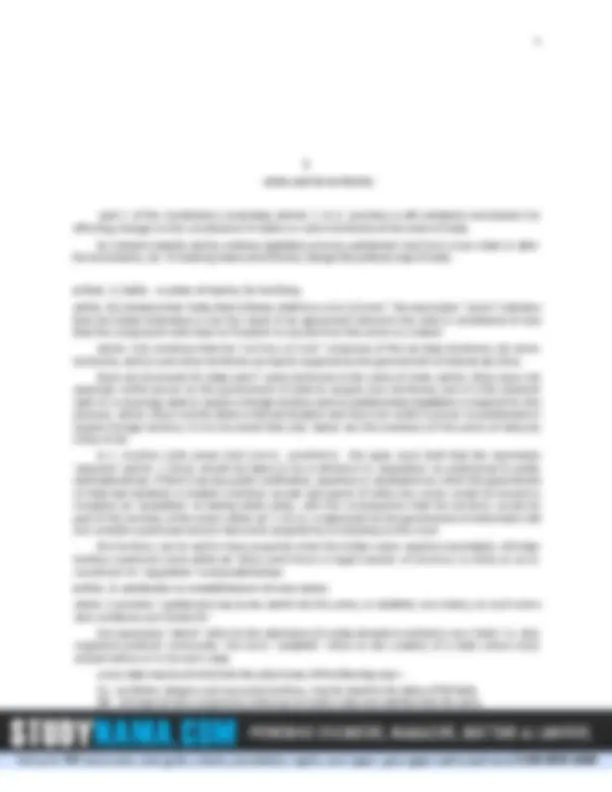
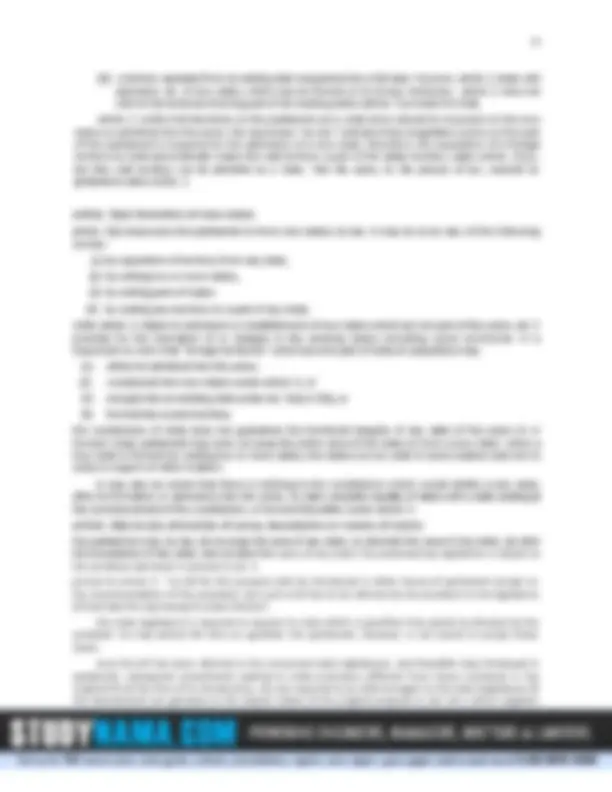

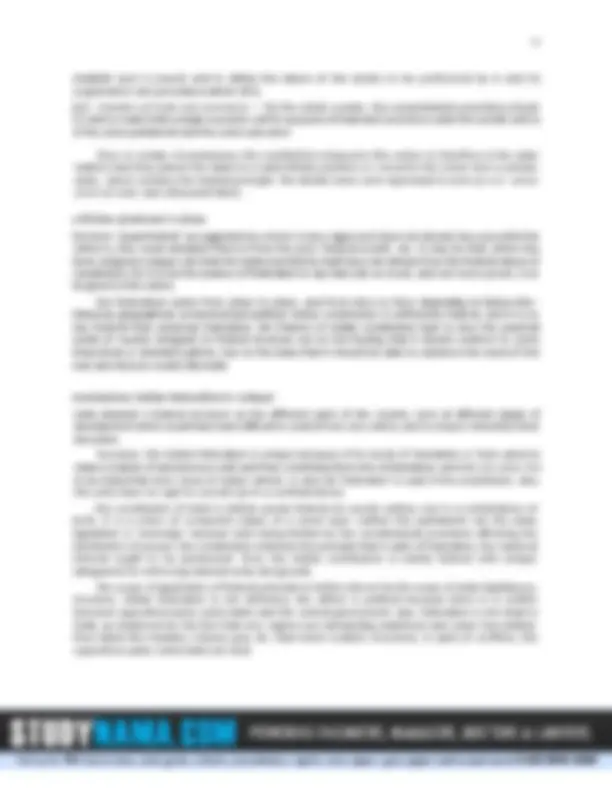
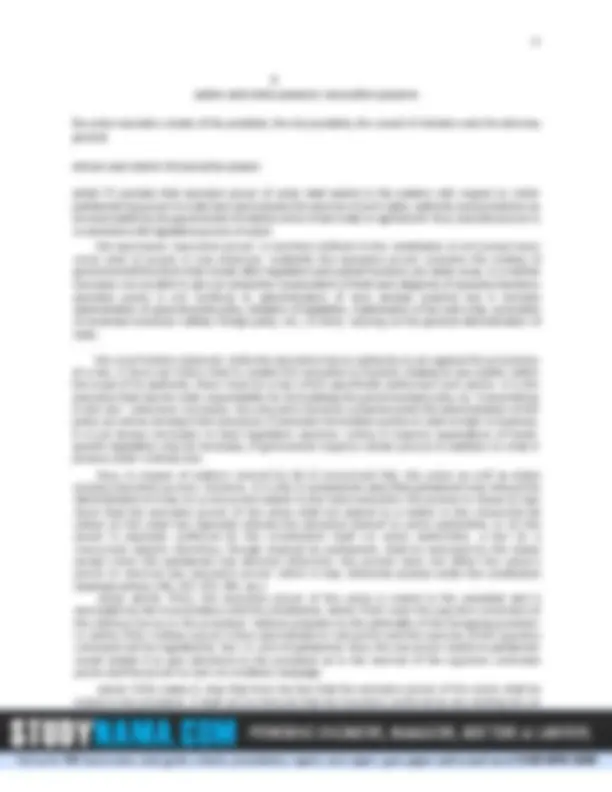
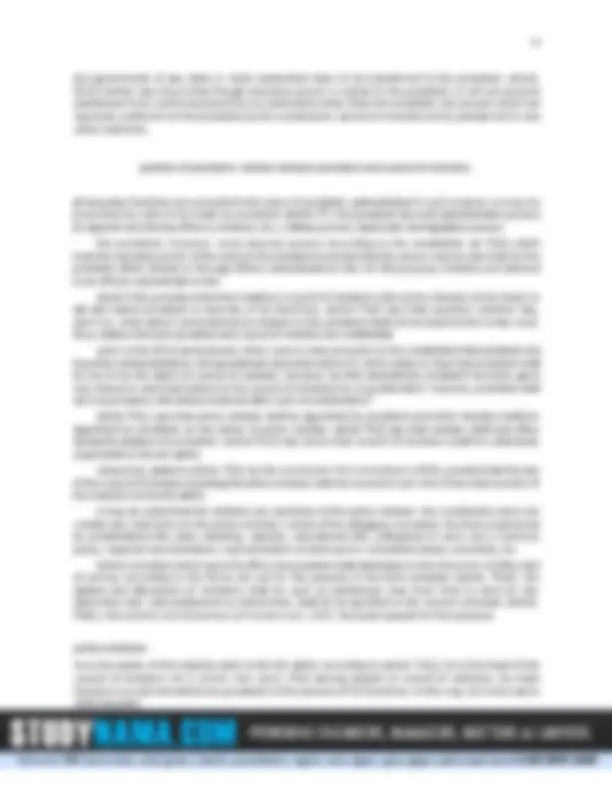

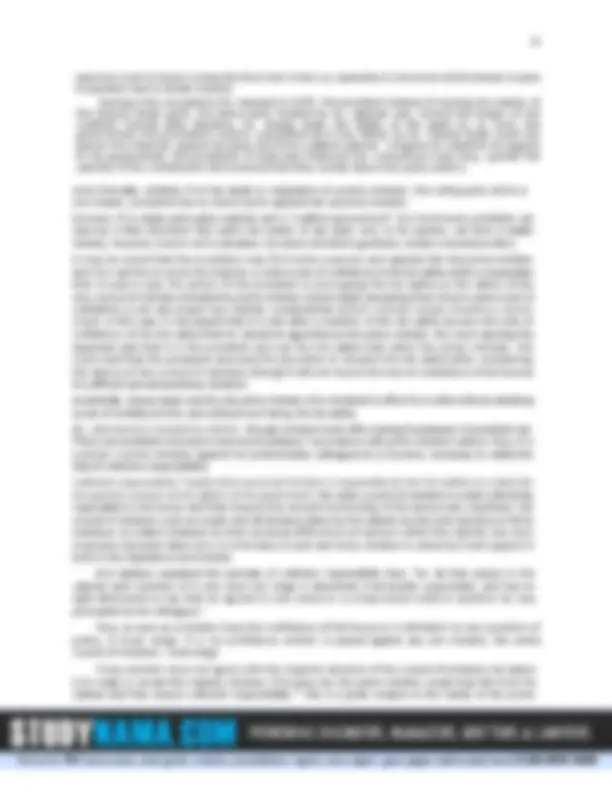
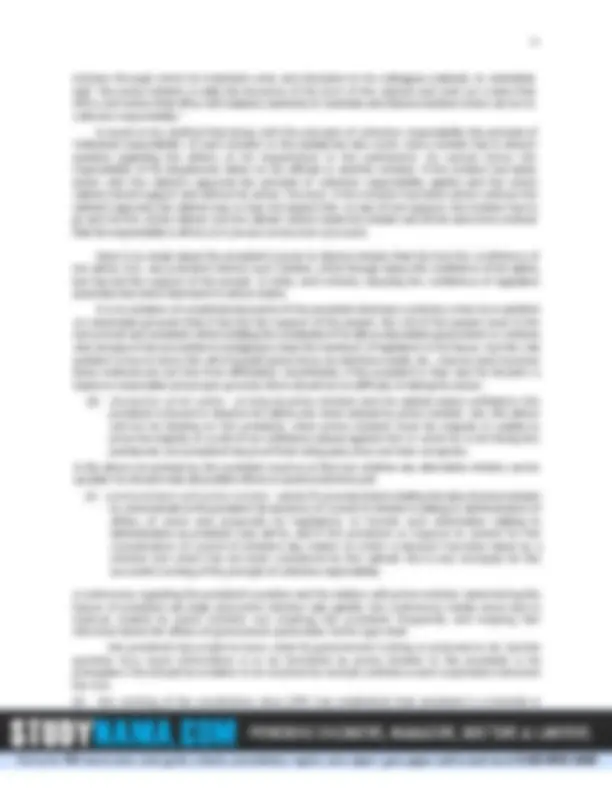
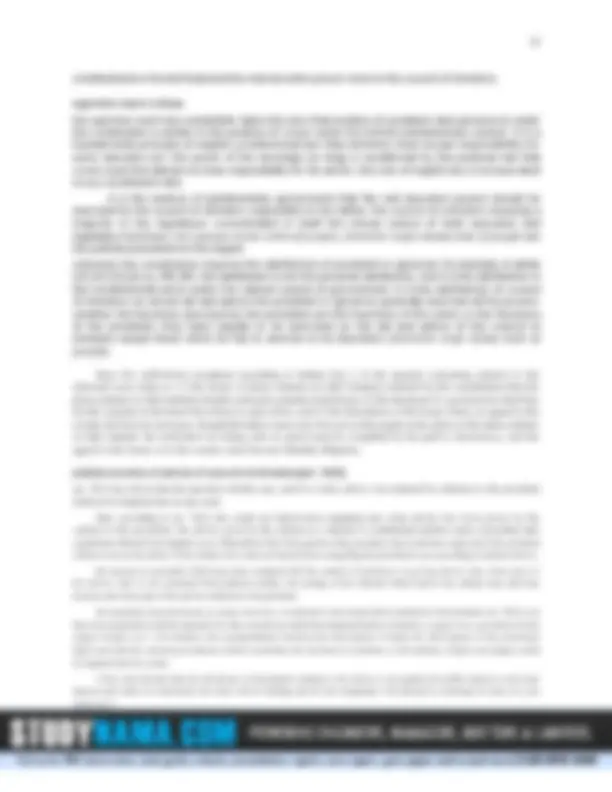

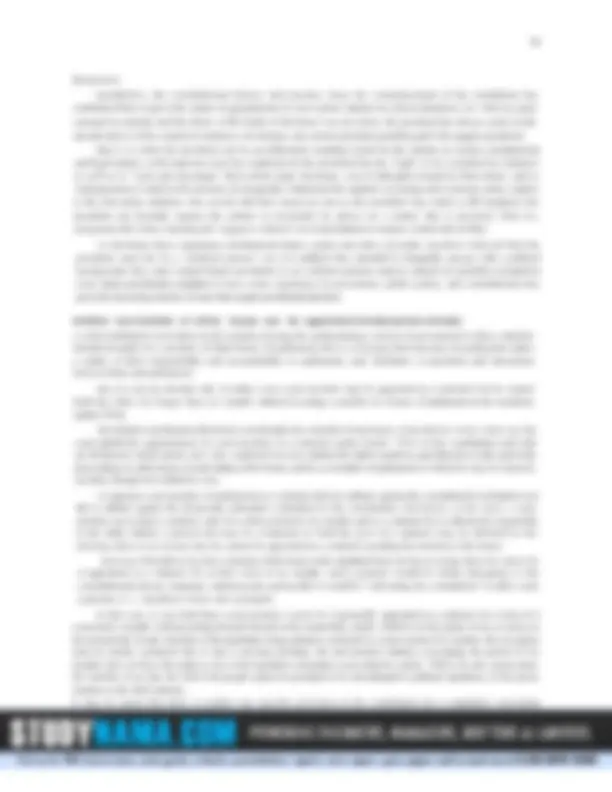
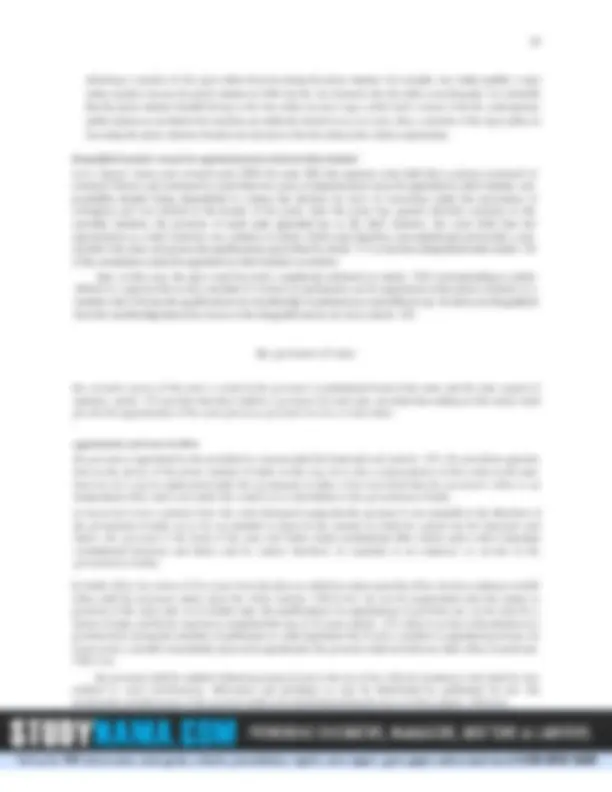
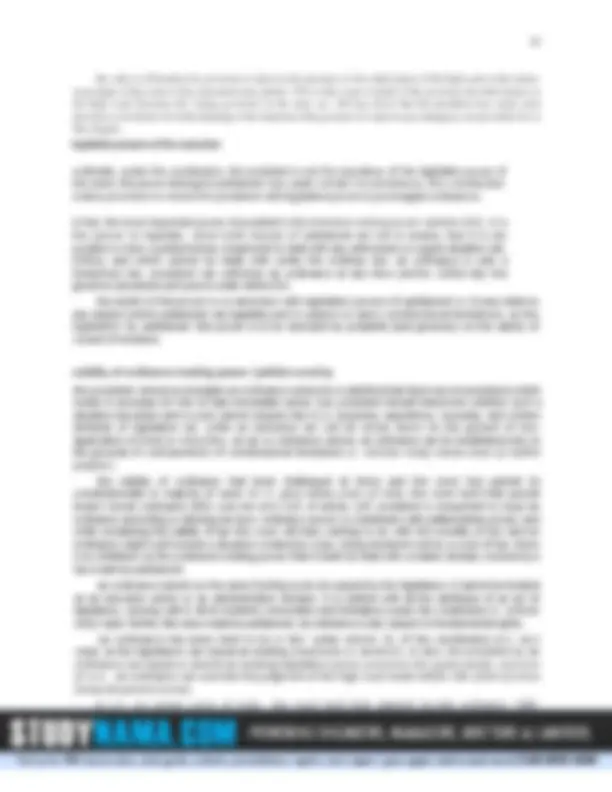
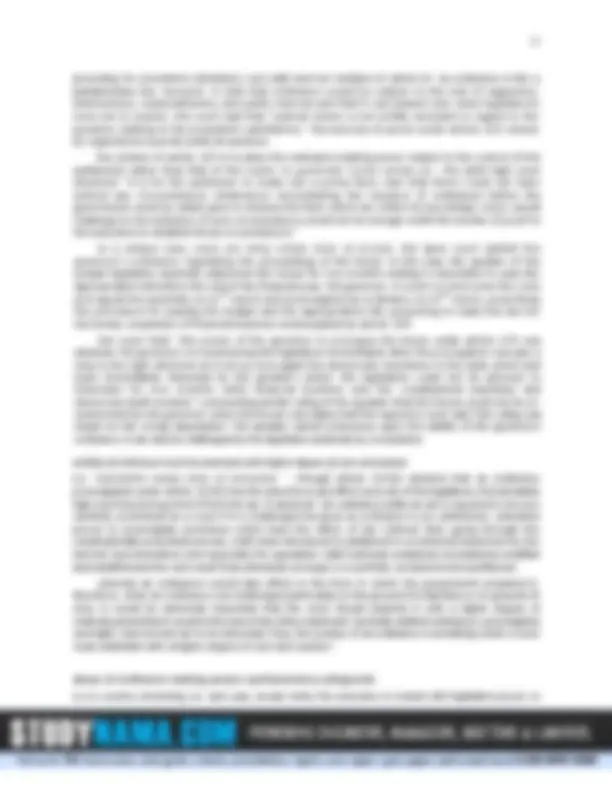
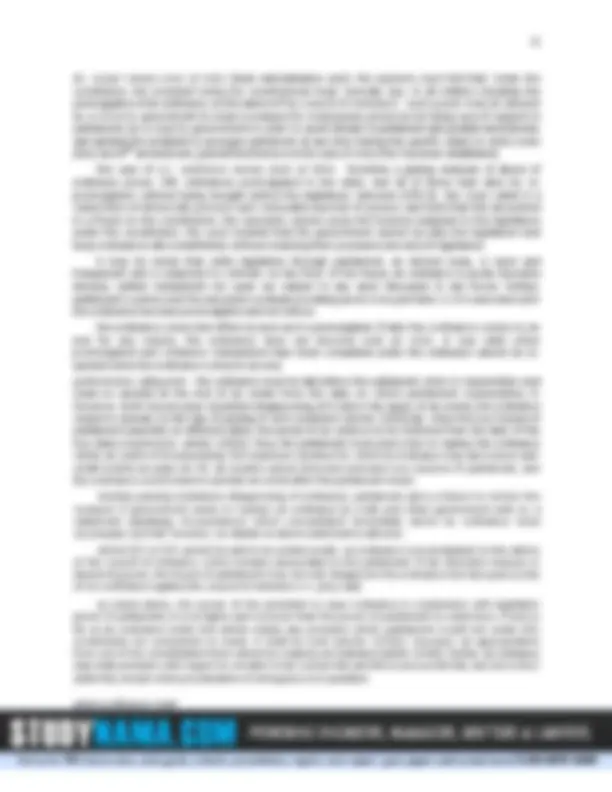
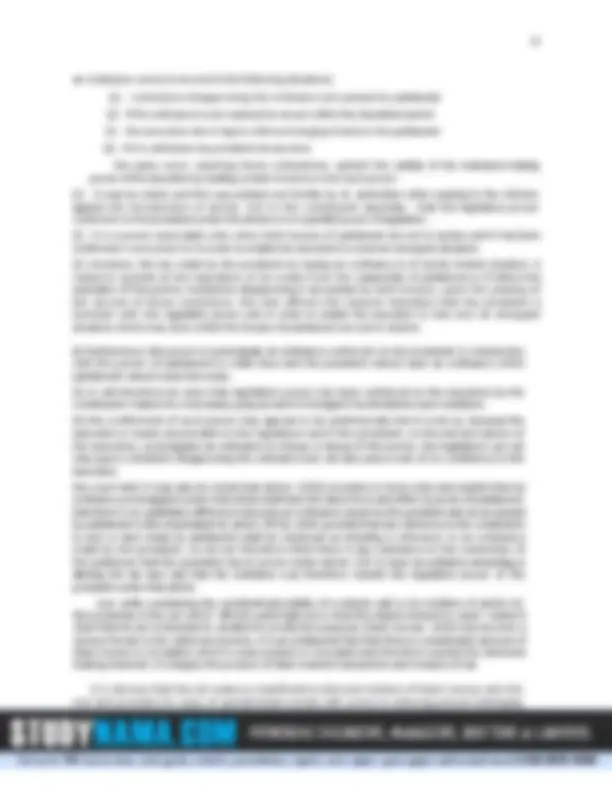
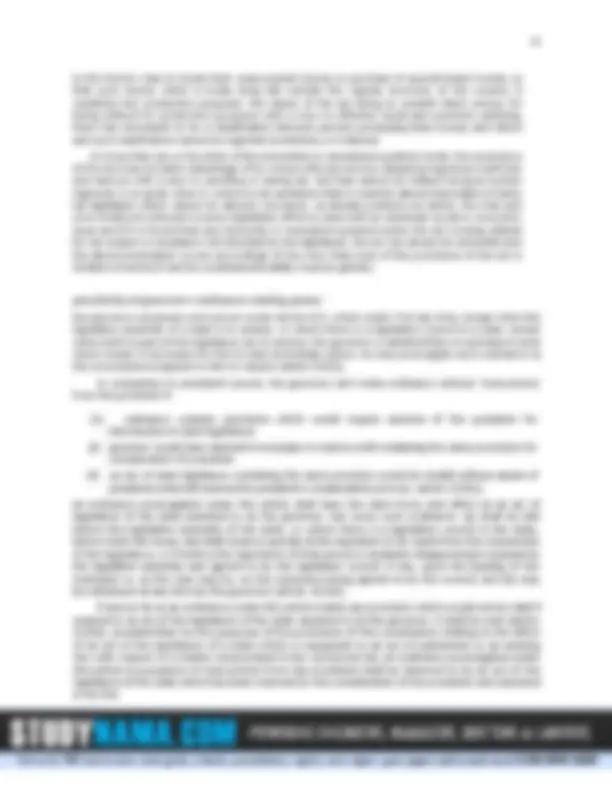
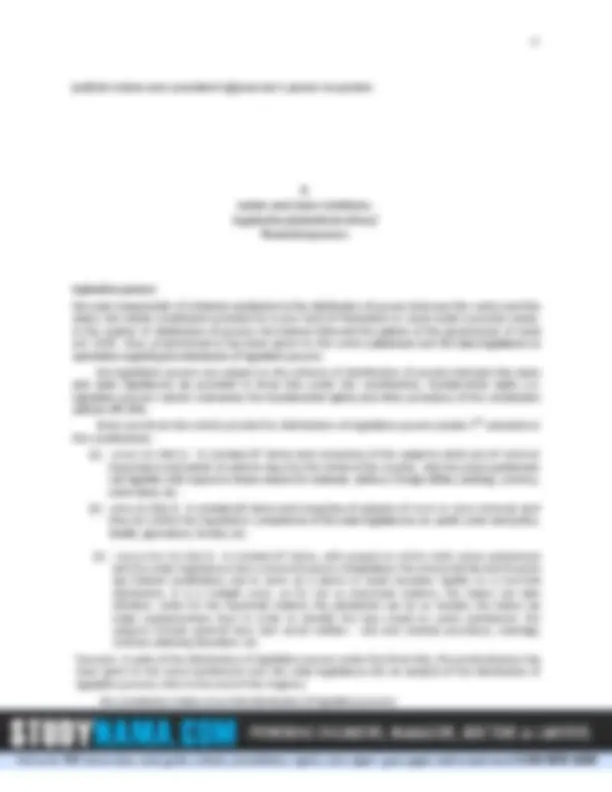
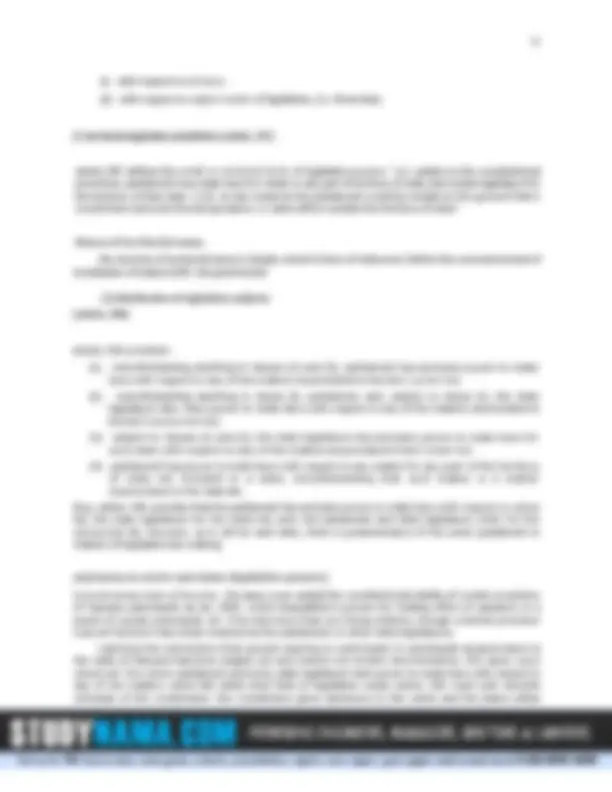
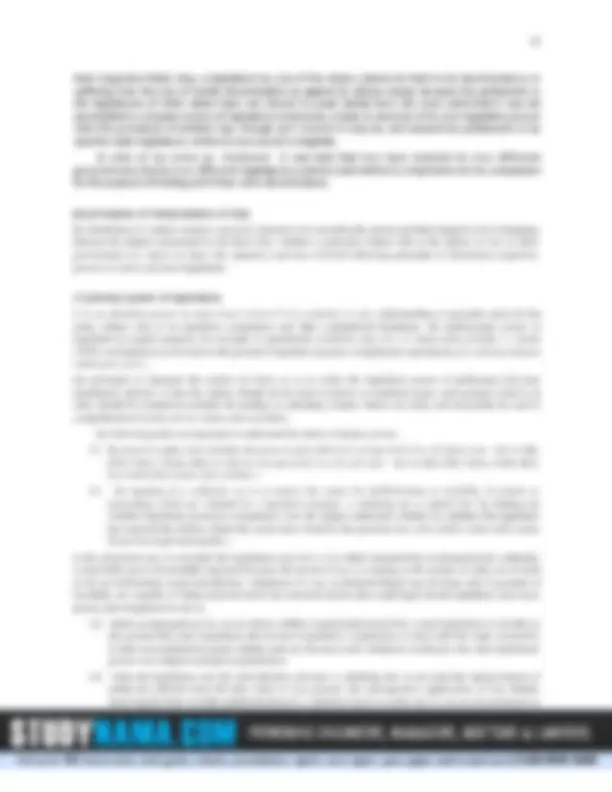
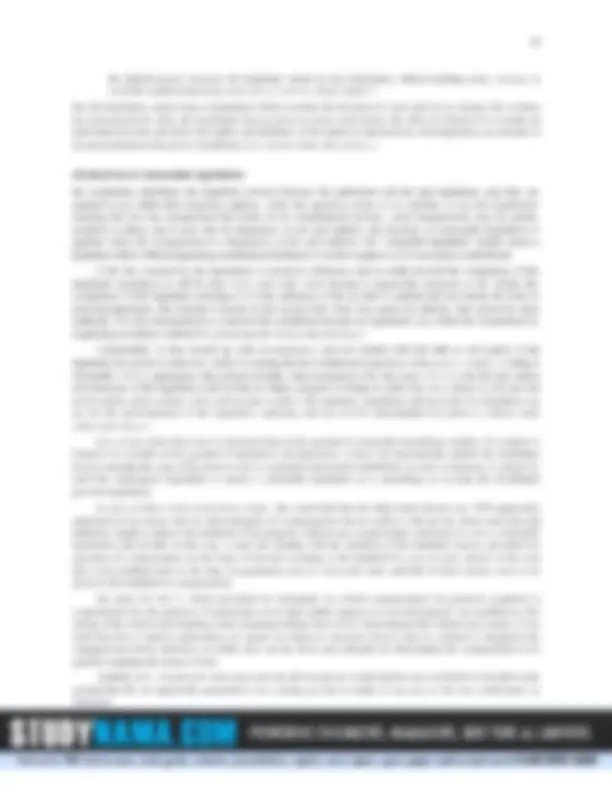
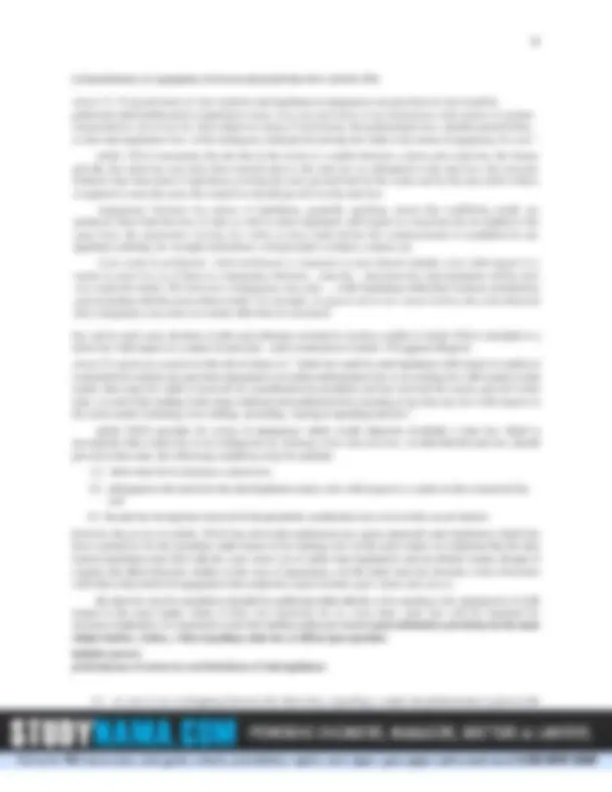
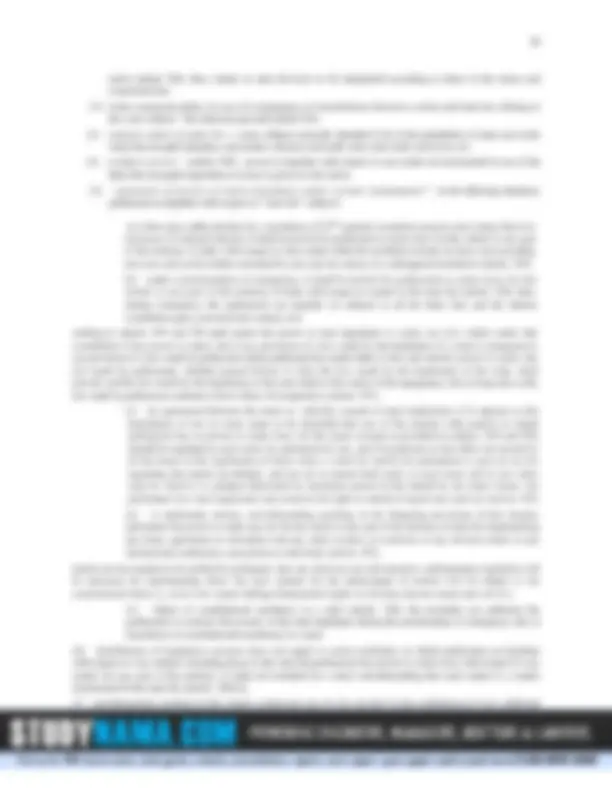
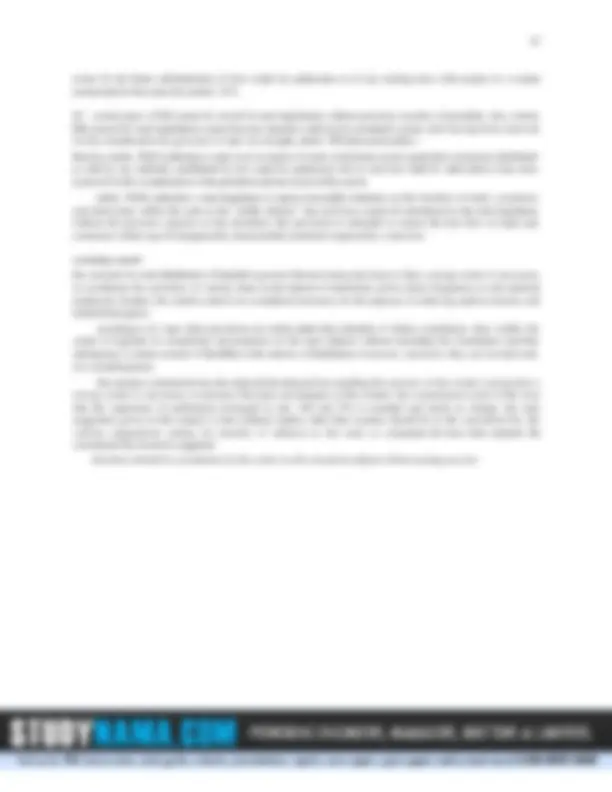
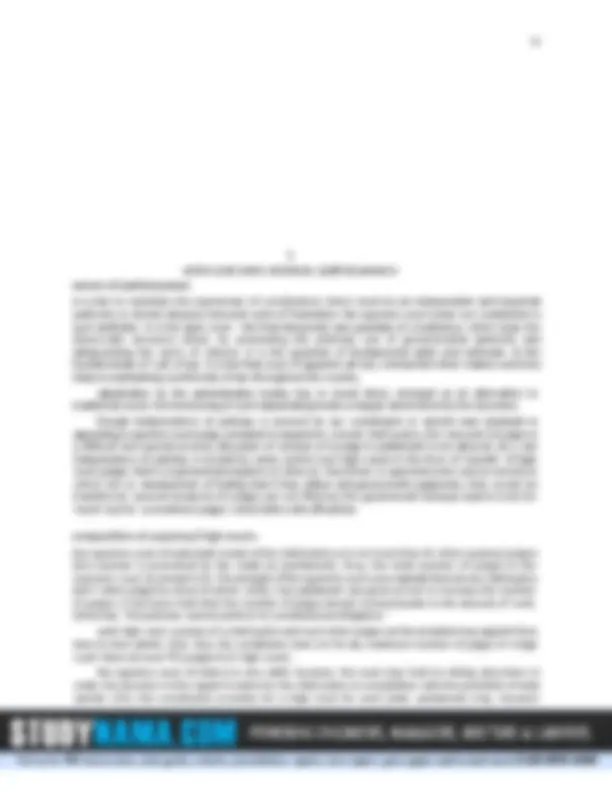
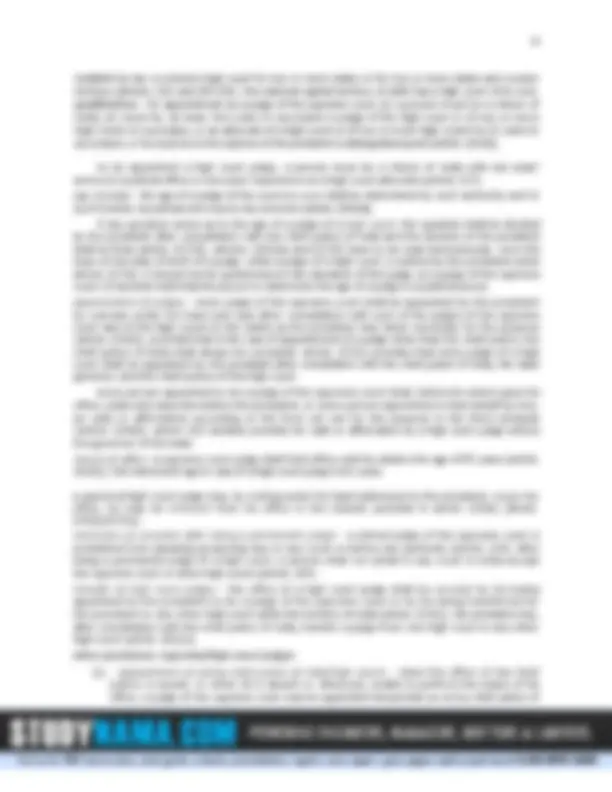
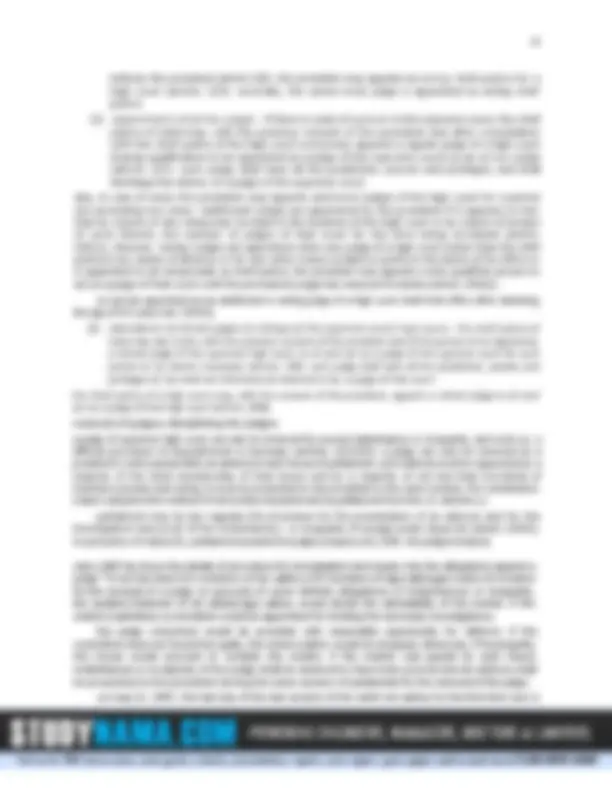


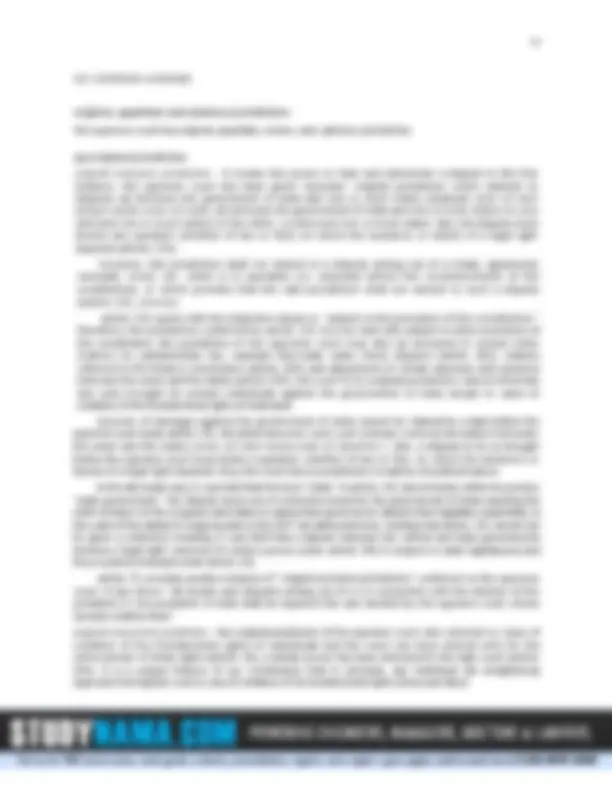
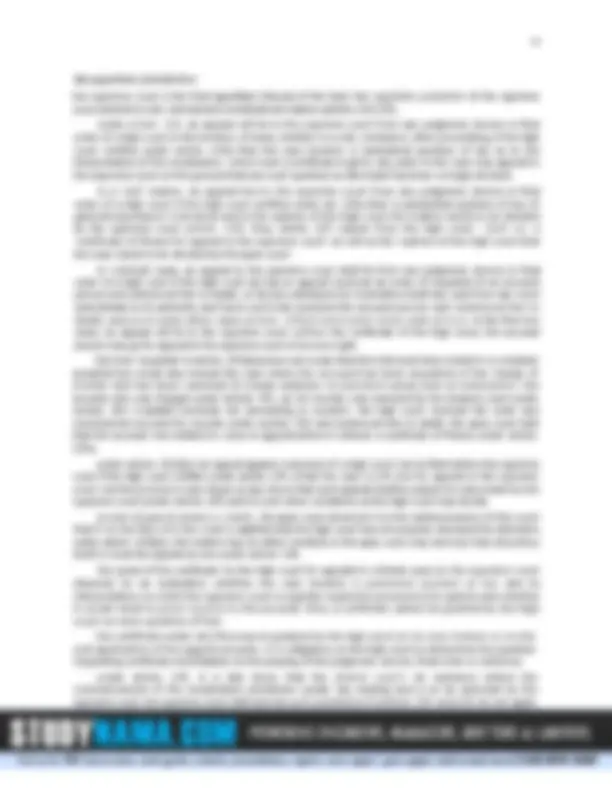
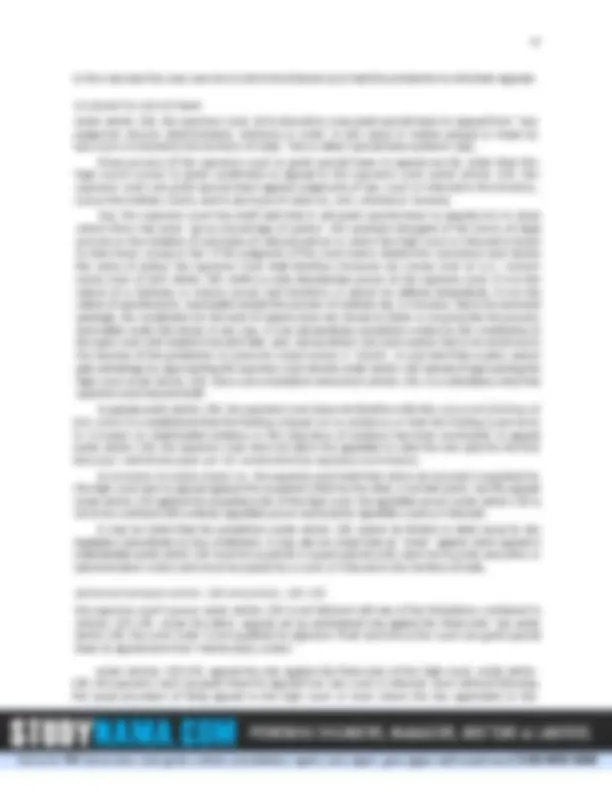
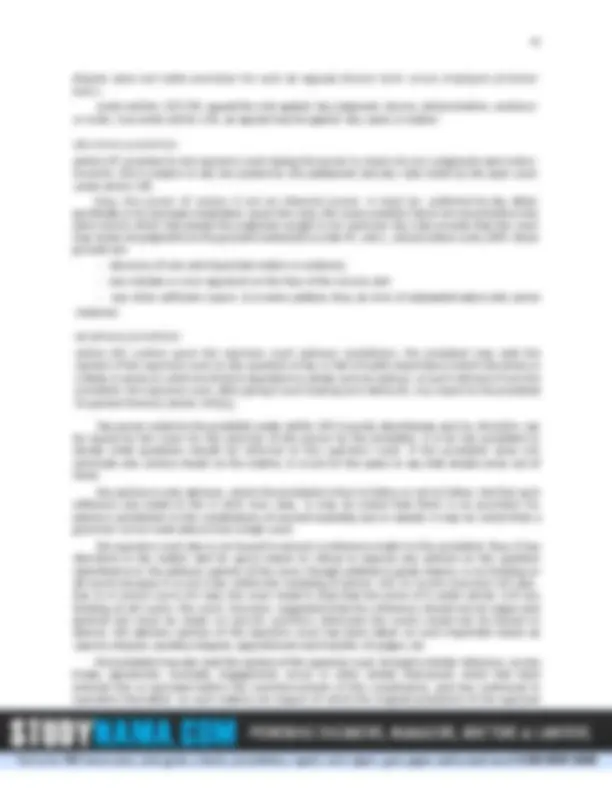
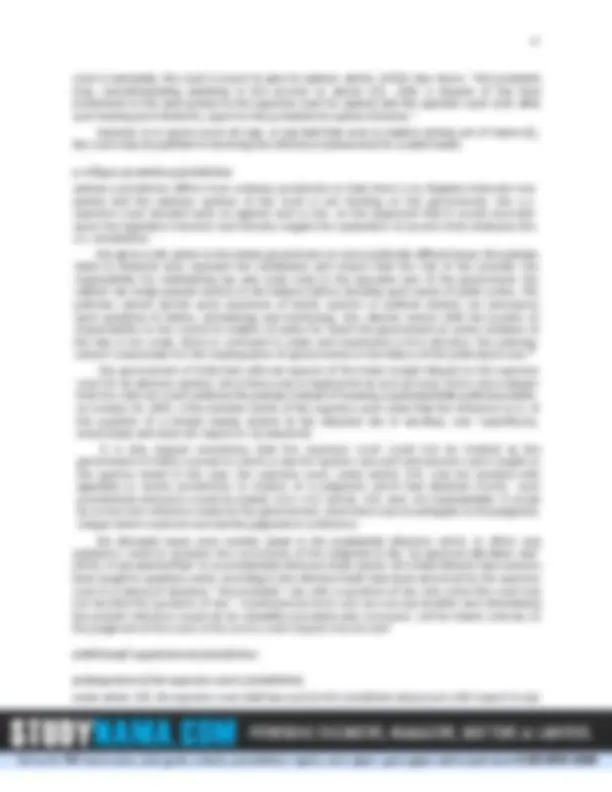
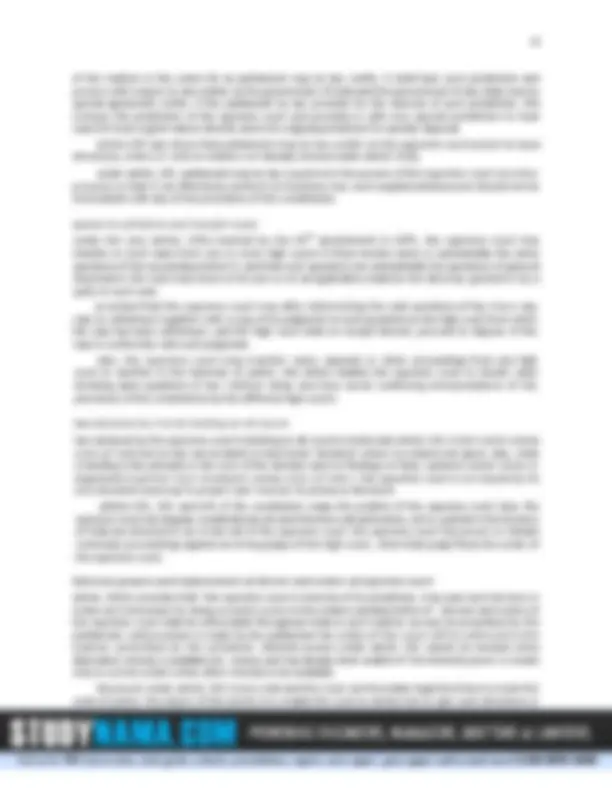
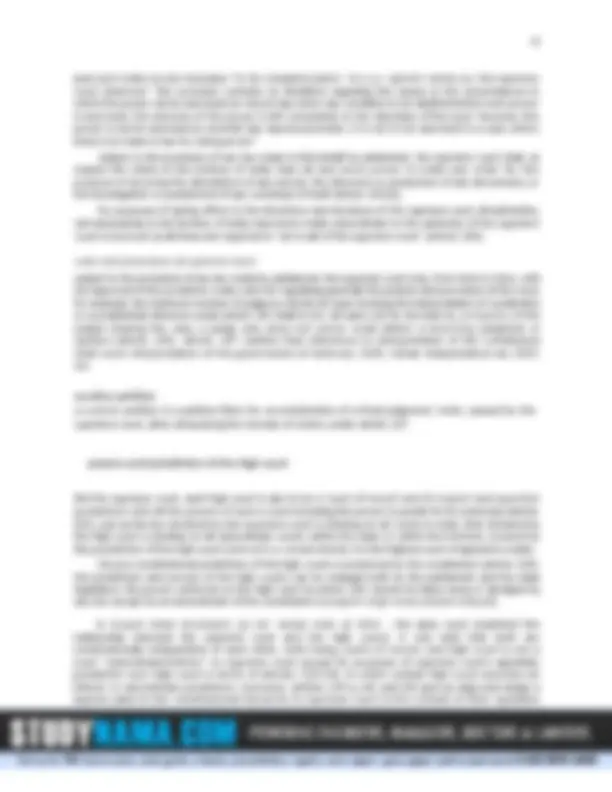

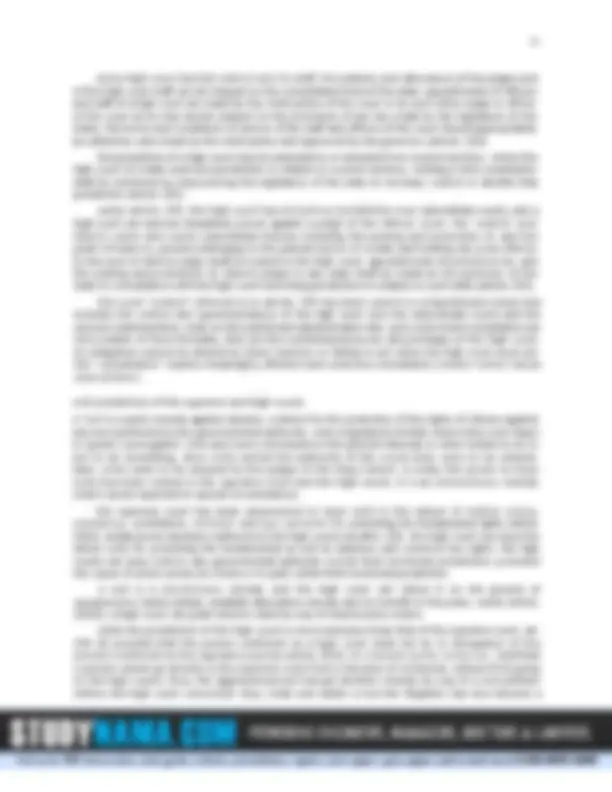
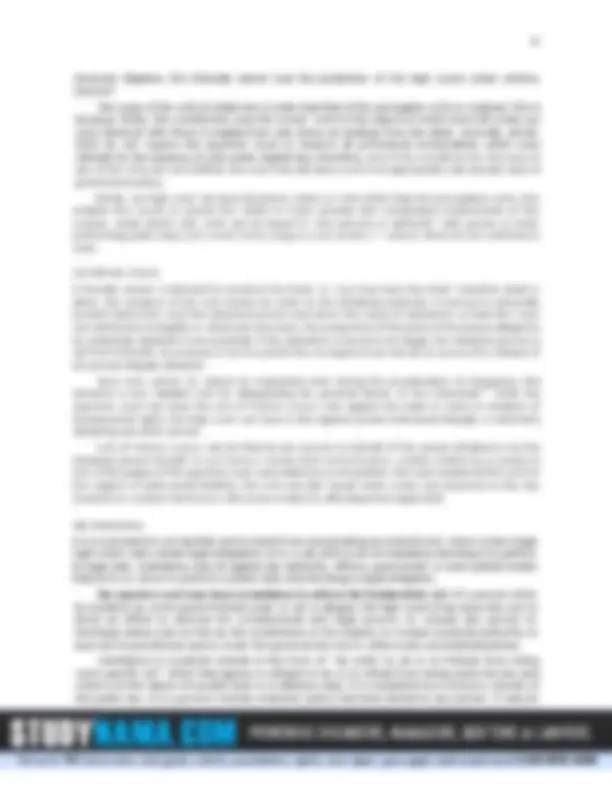
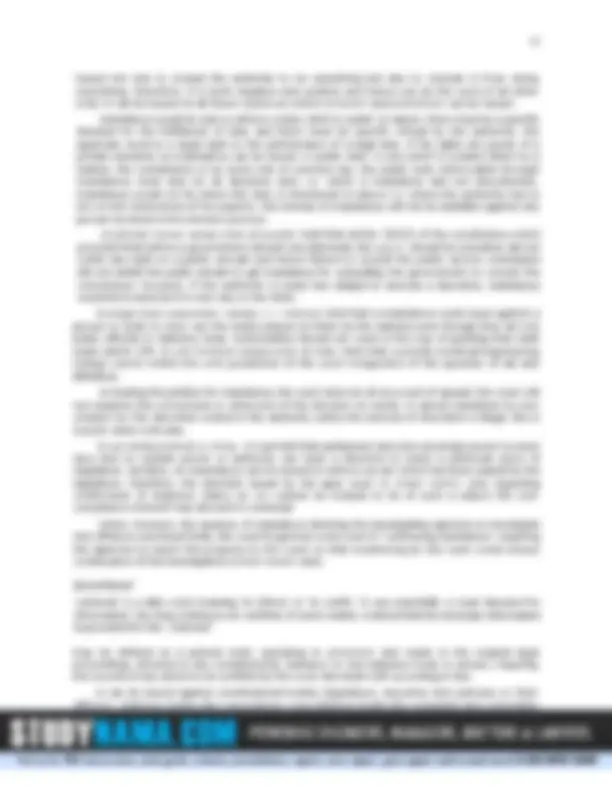
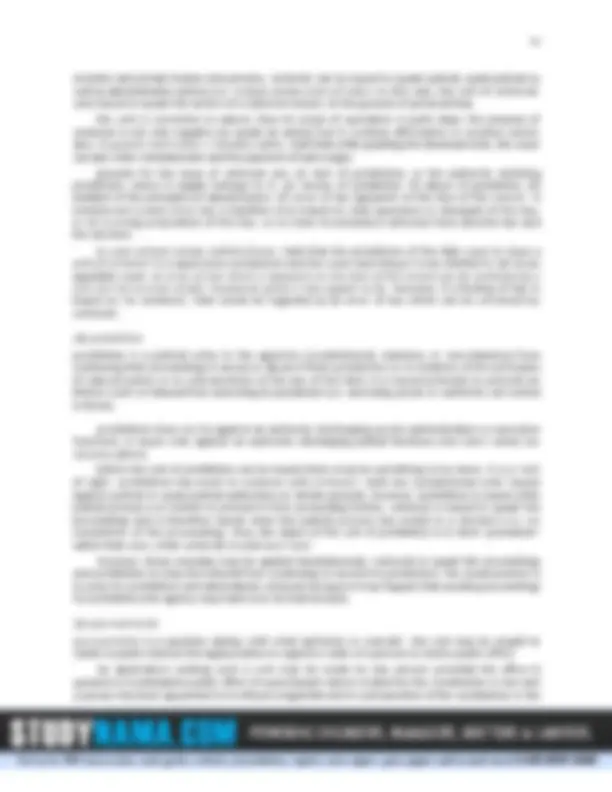
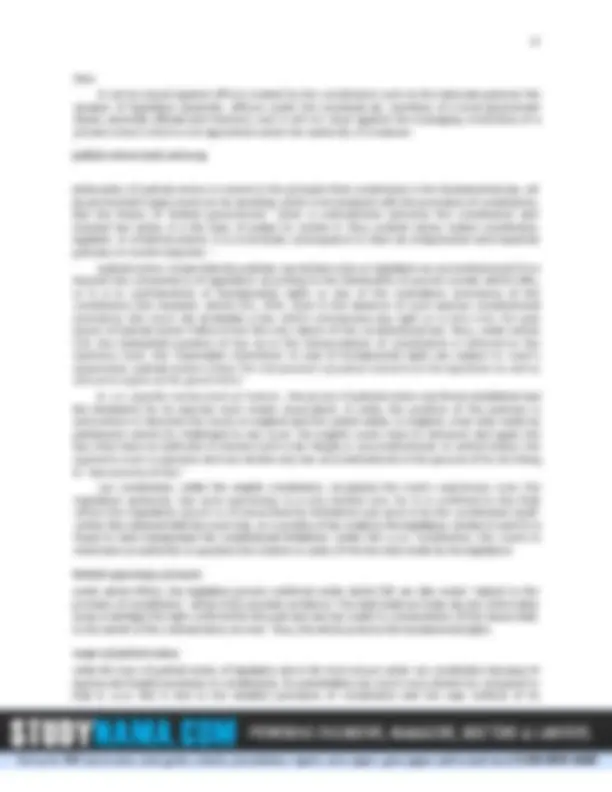
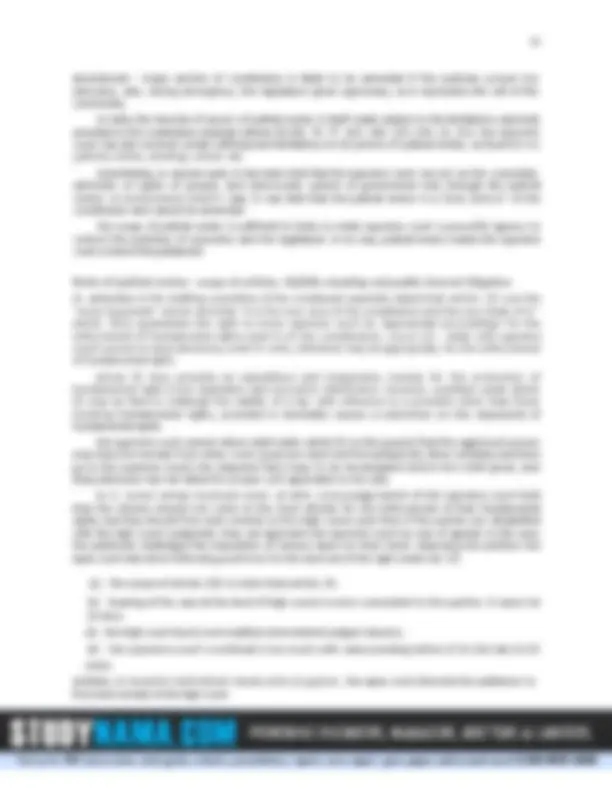
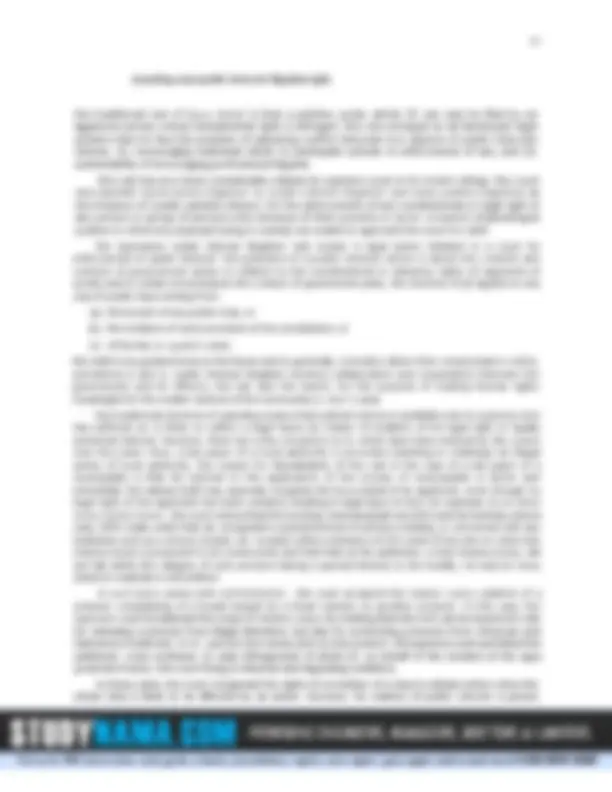
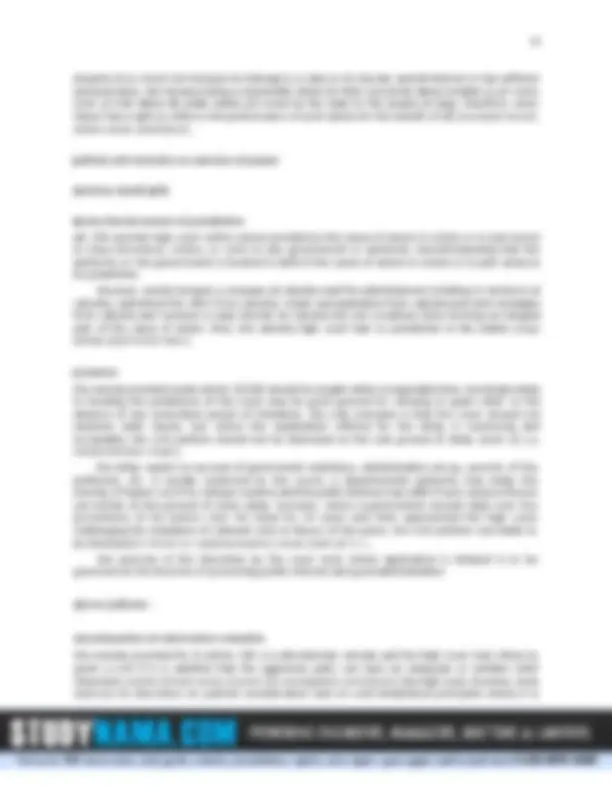
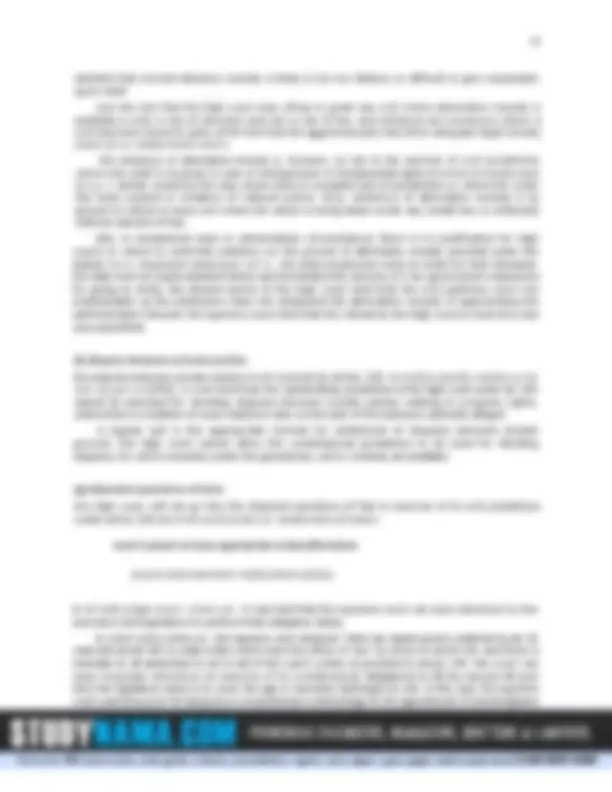
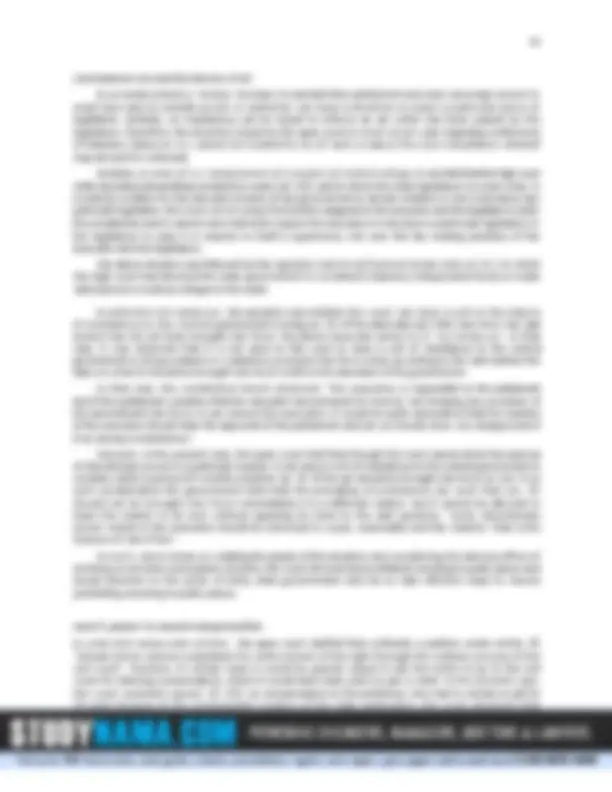
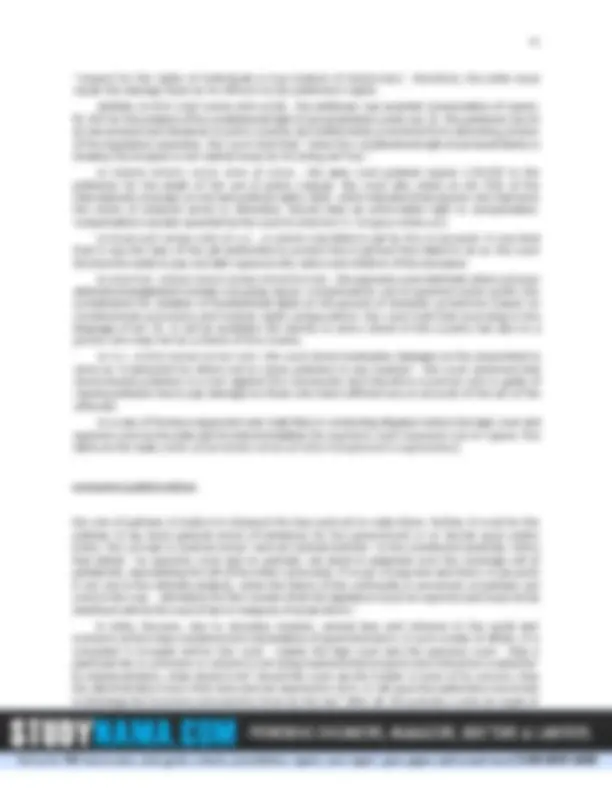
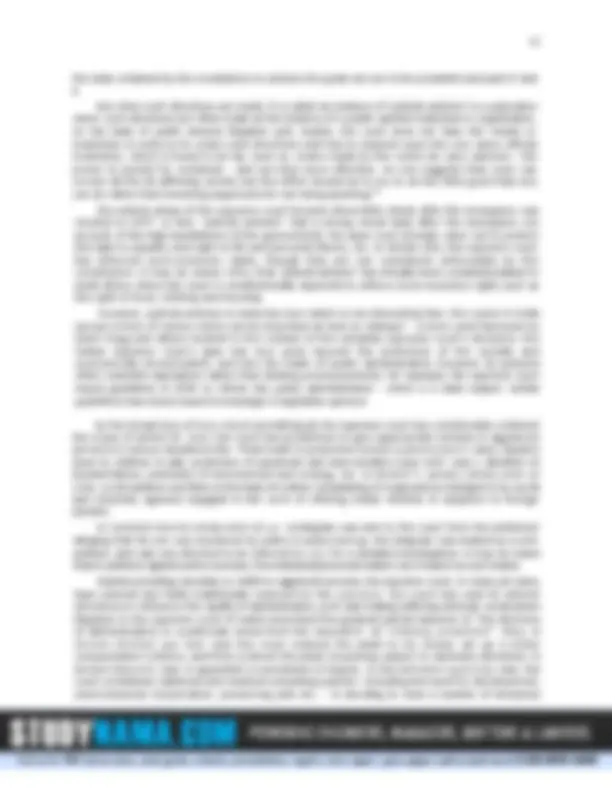
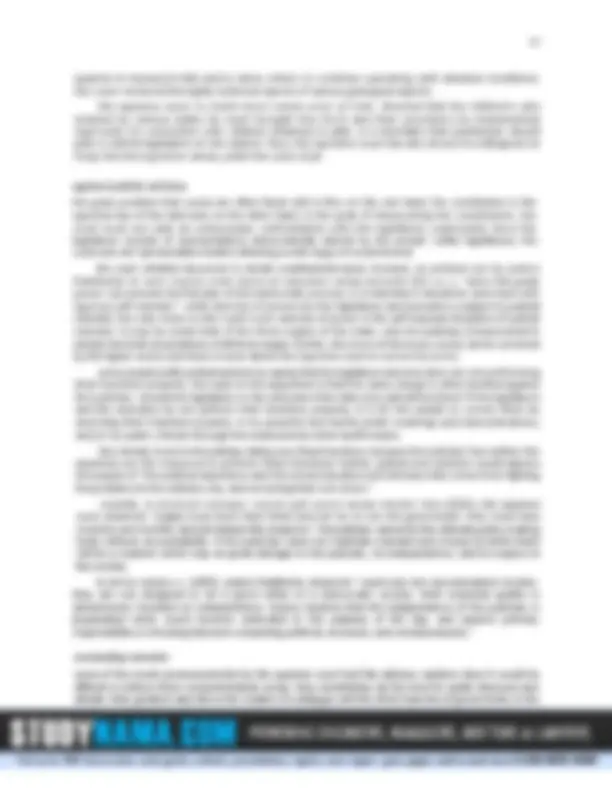
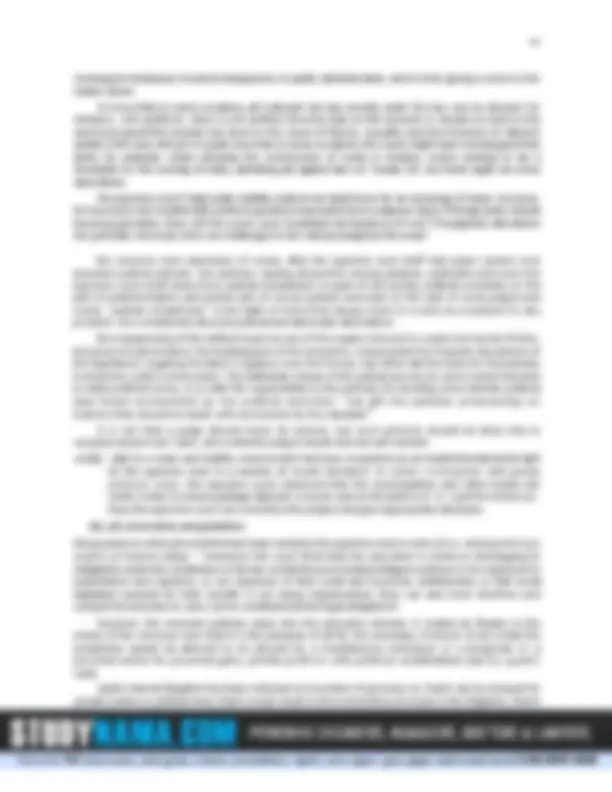
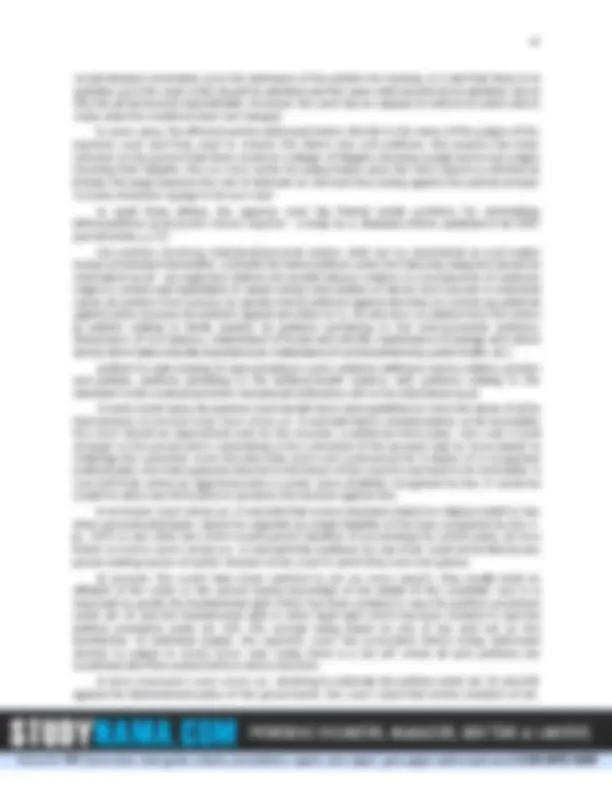
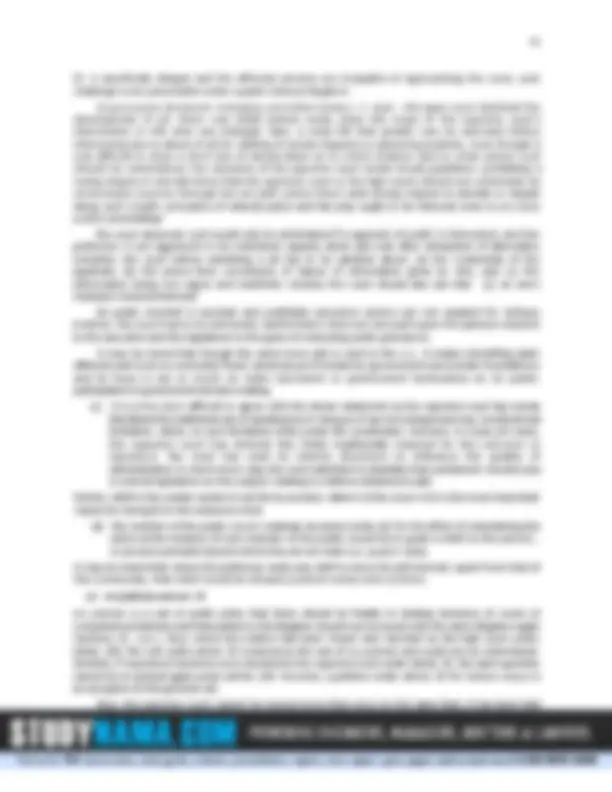
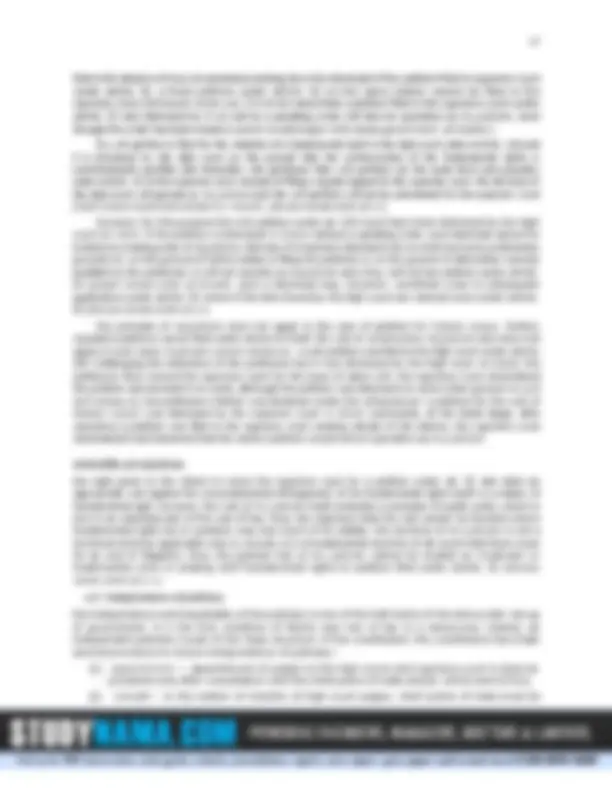
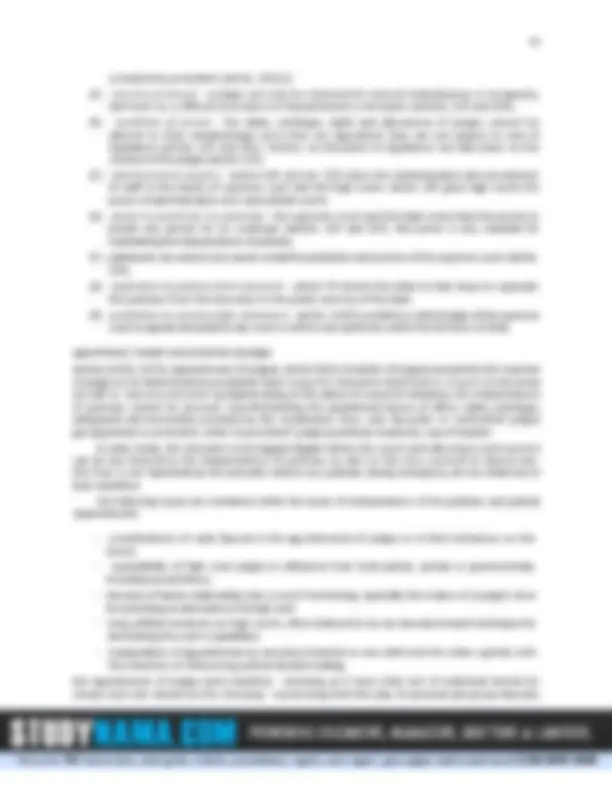

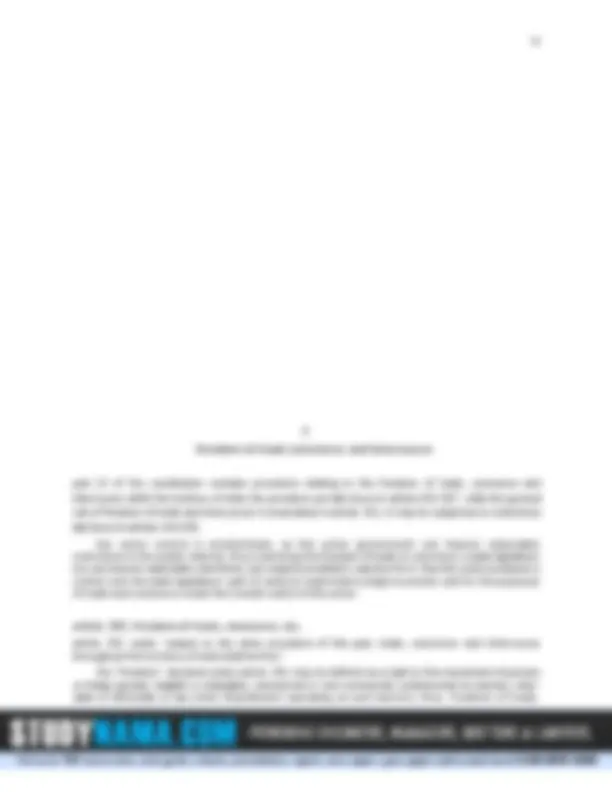

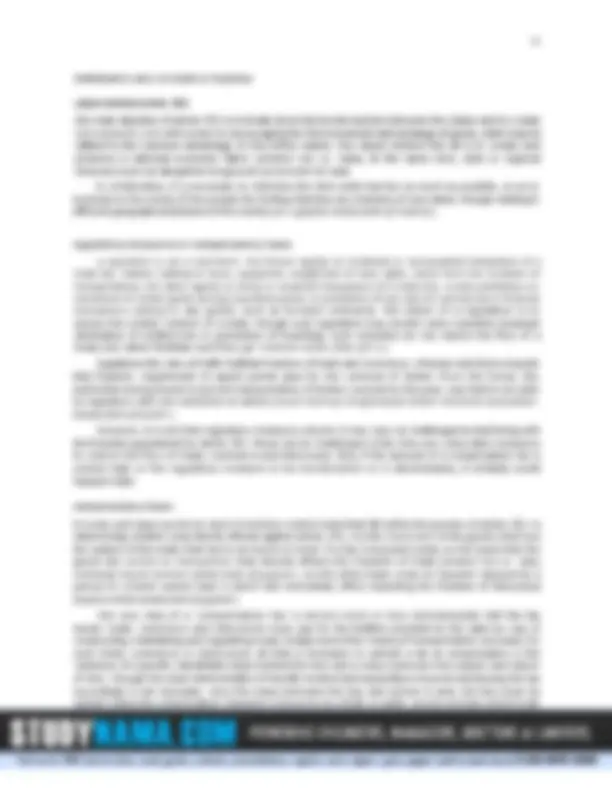
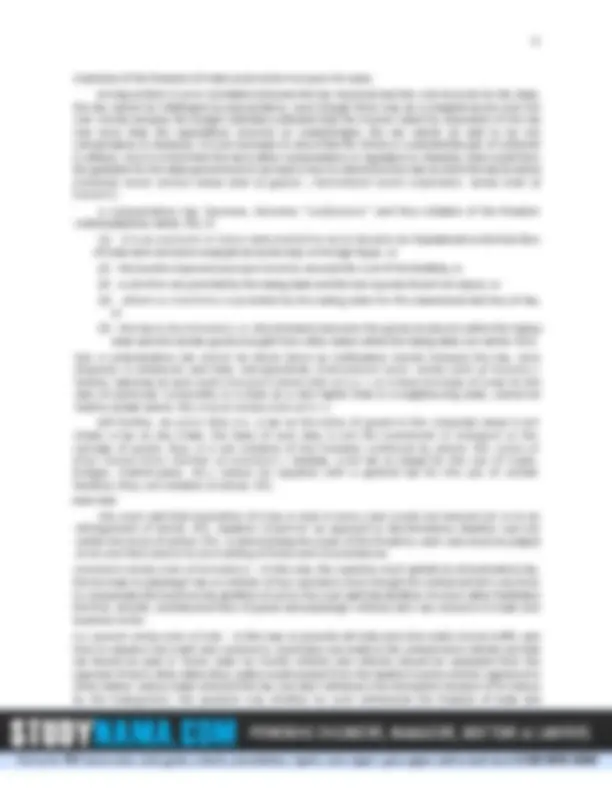
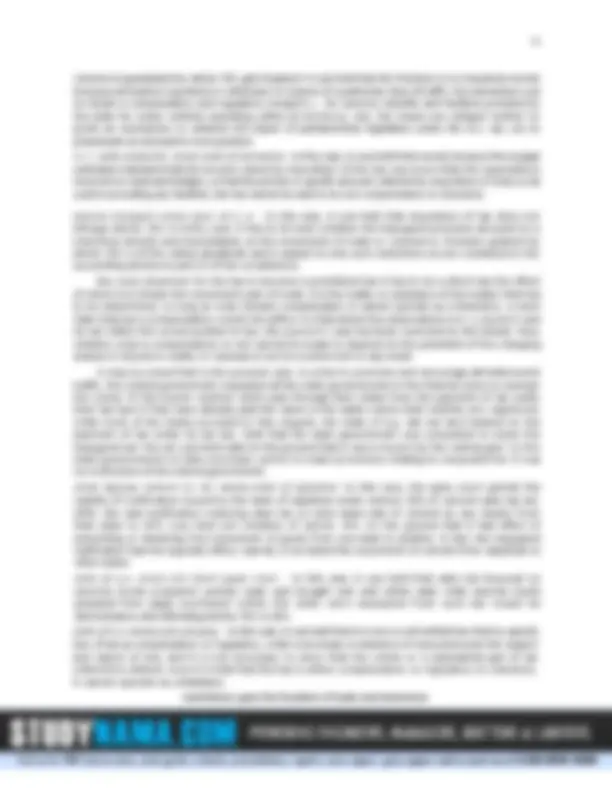
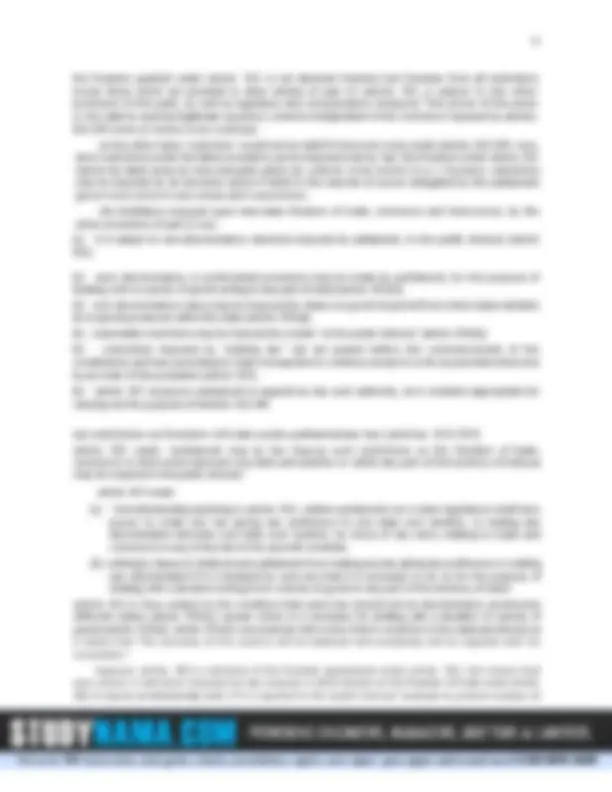
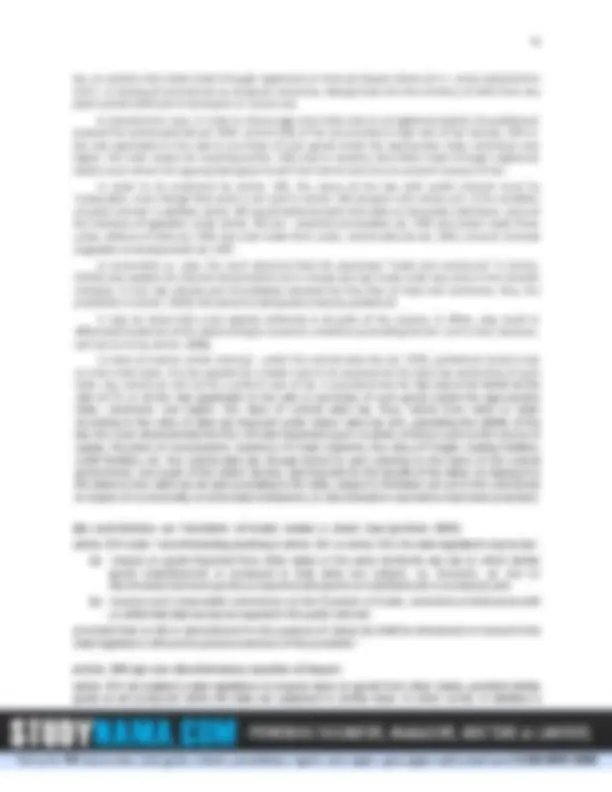
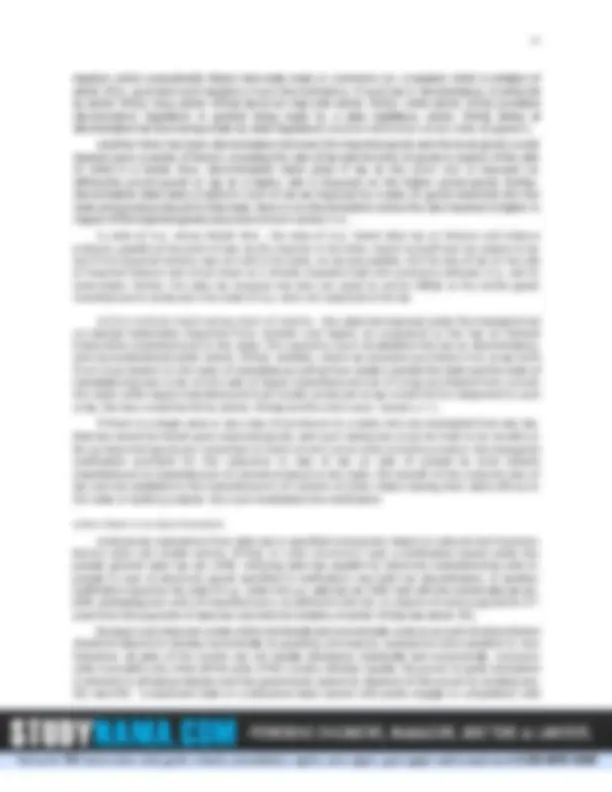
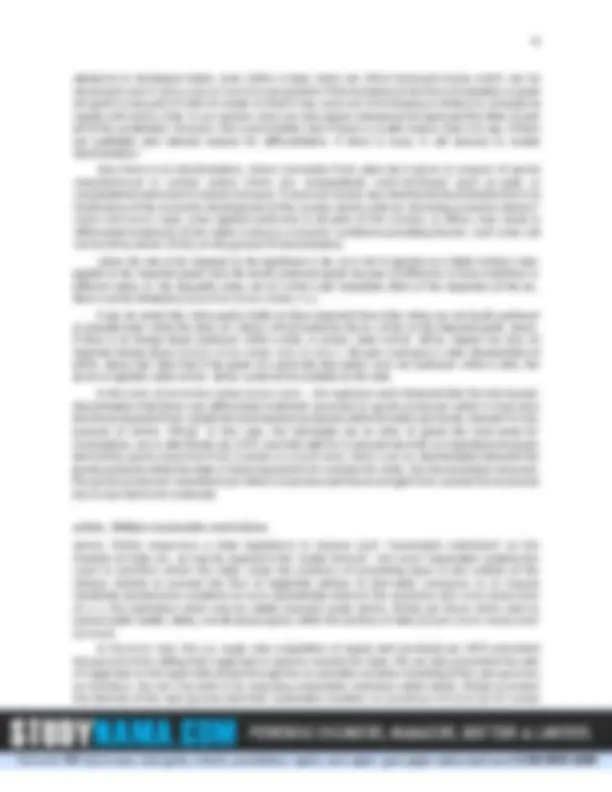
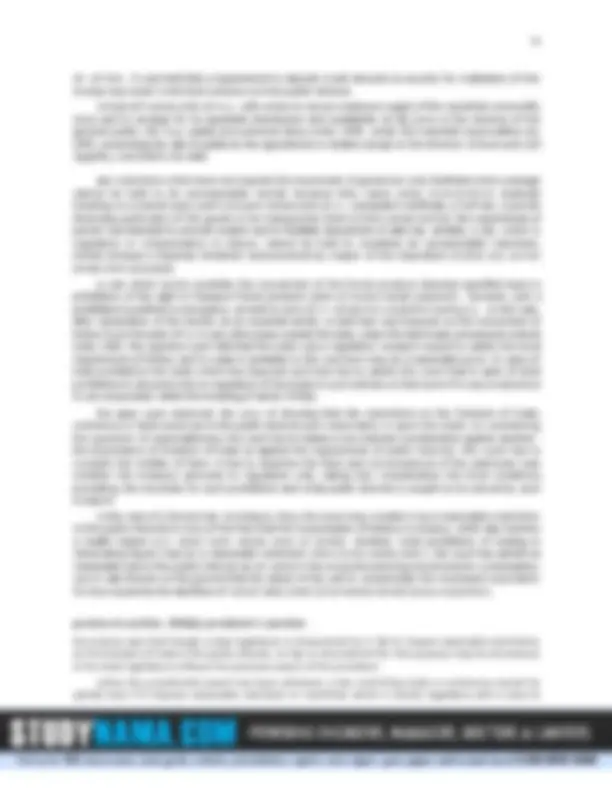
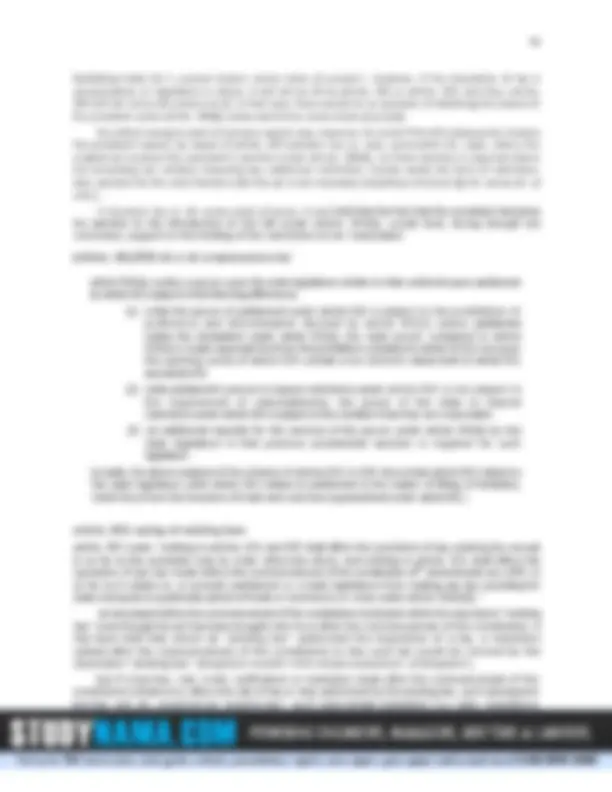
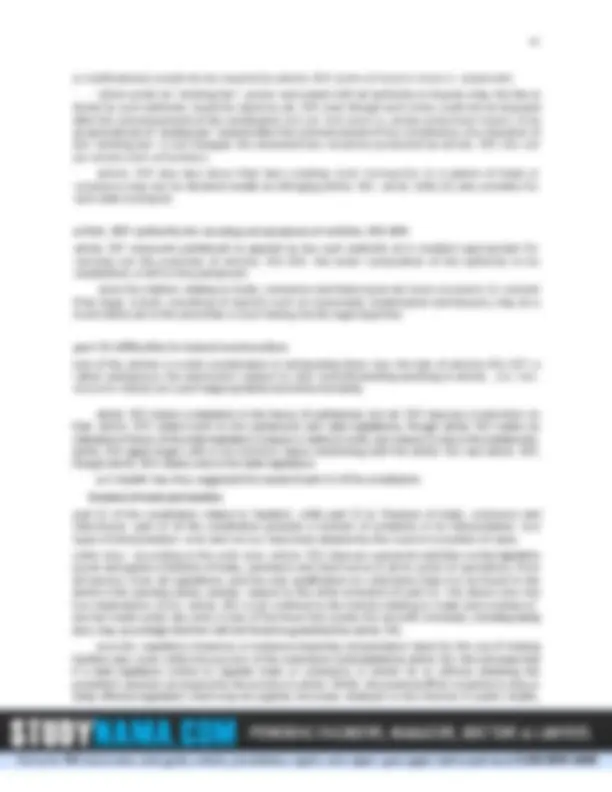
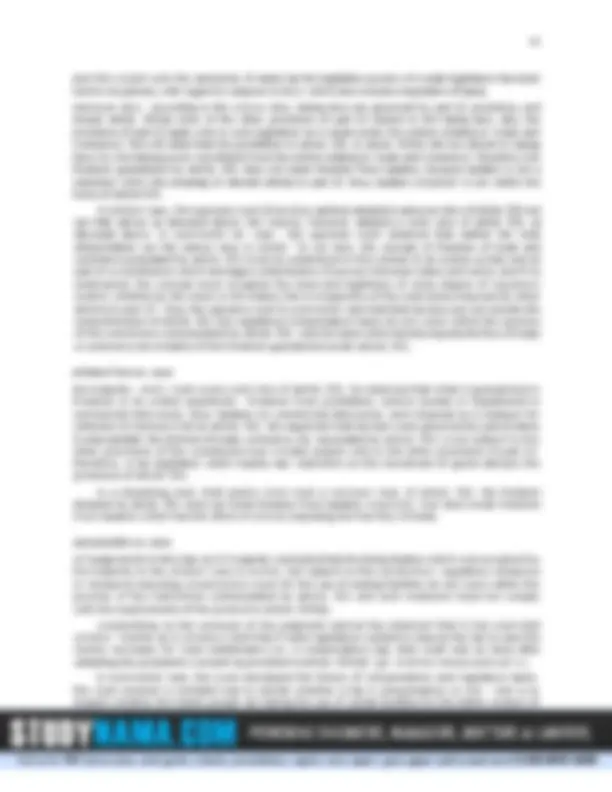
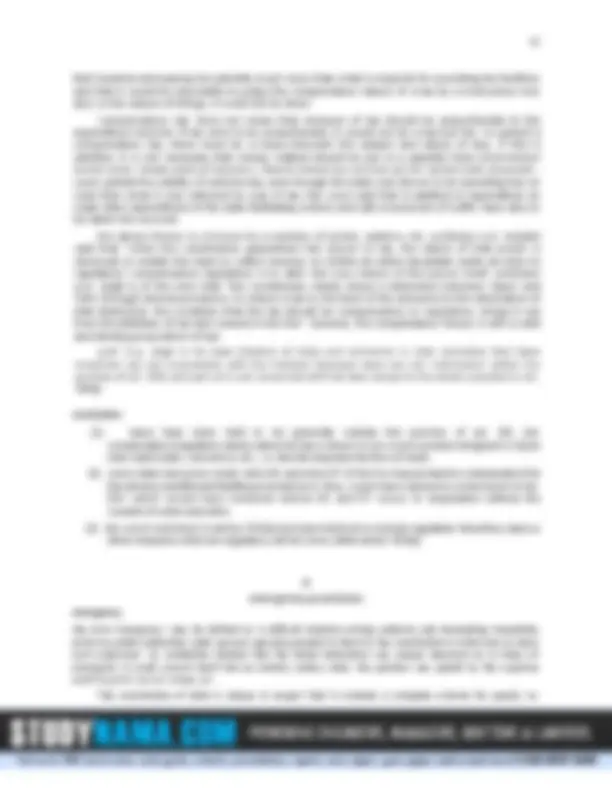
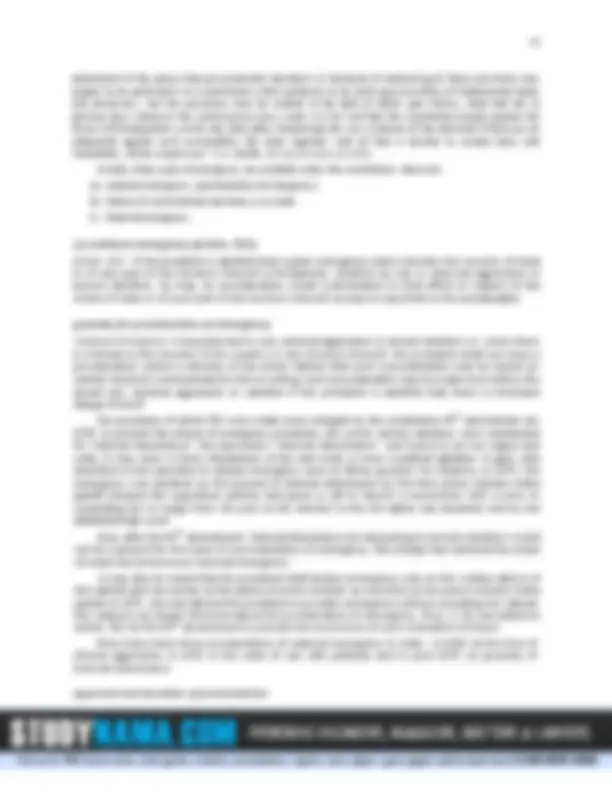
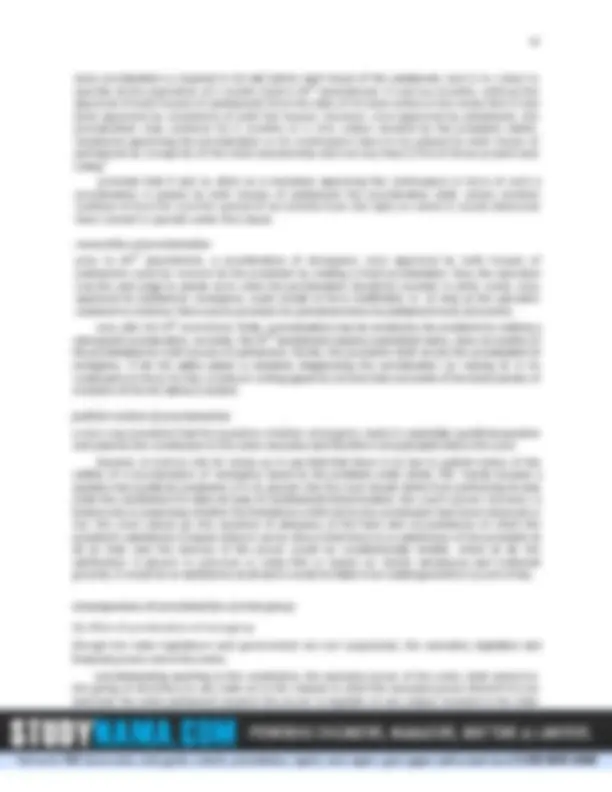
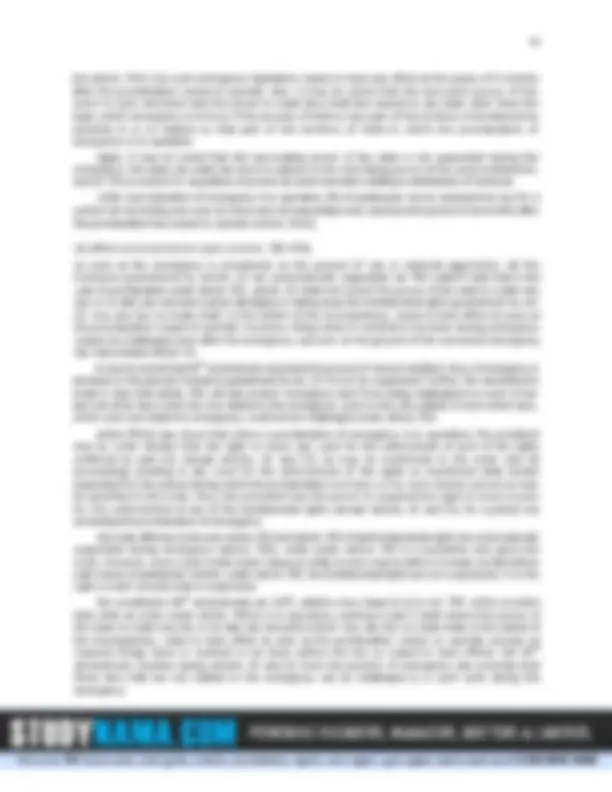
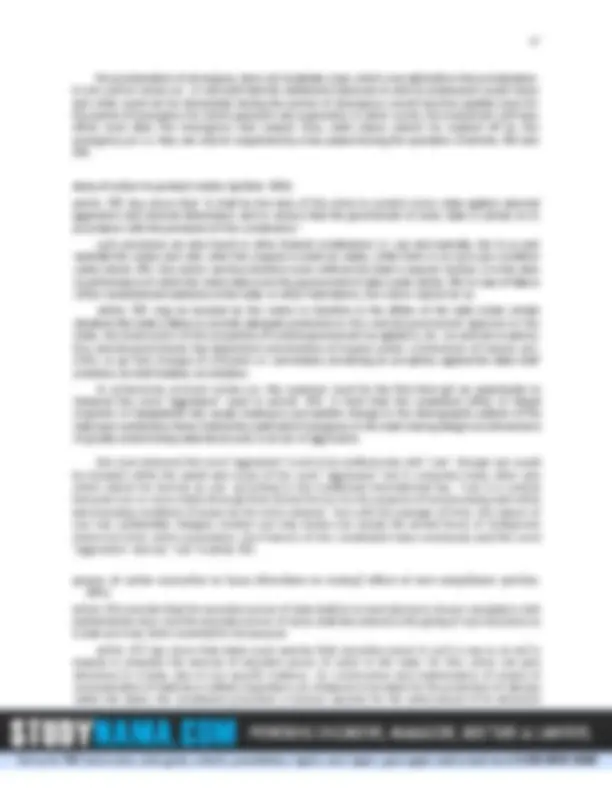
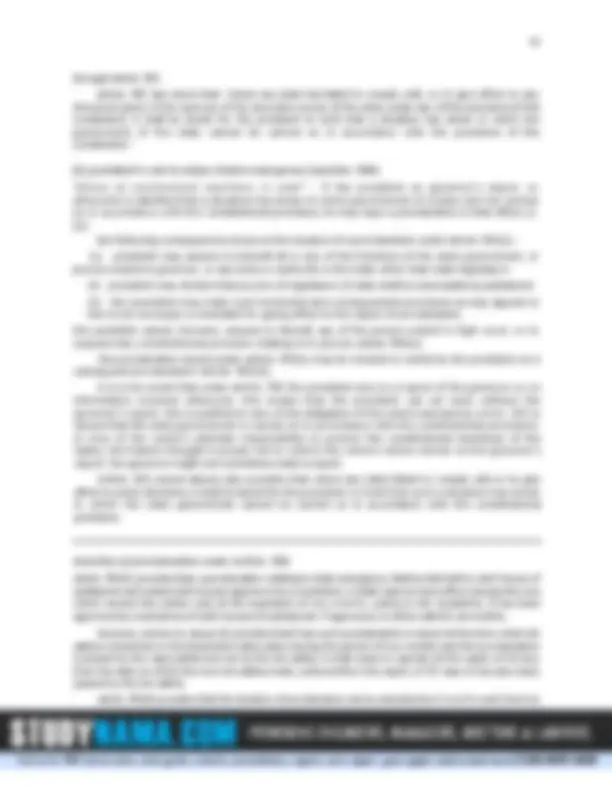
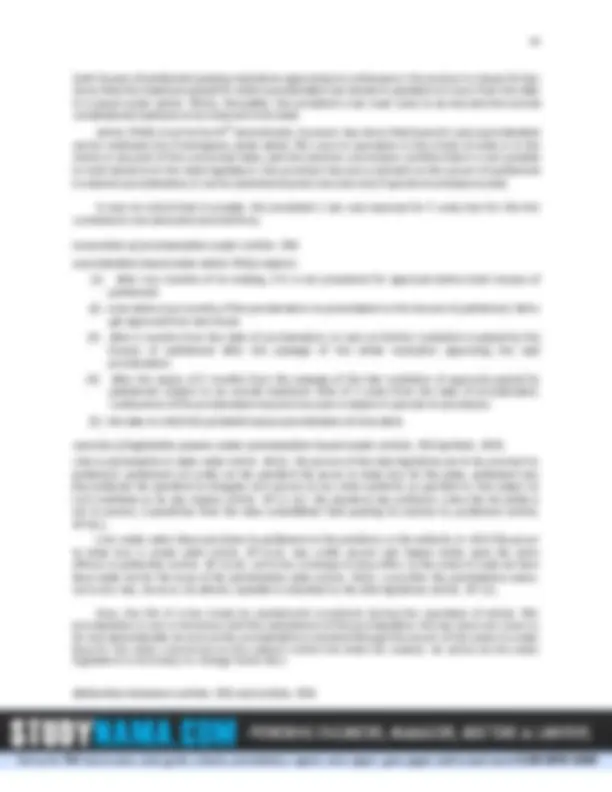
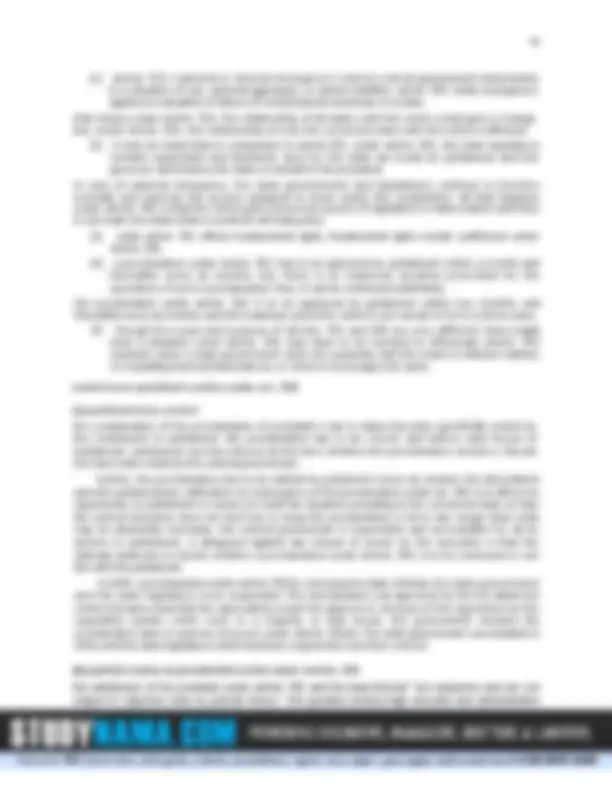







Study with the several resources on Docsity

Earn points by helping other students or get them with a premium plan


Prepare for your exams
Study with the several resources on Docsity

Earn points to download
Earn points by helping other students or get them with a premium plan
Community
Ask the community for help and clear up your study doubts
Discover the best universities in your country according to Docsity users
Free resources
Download our free guides on studying techniques, anxiety management strategies, and thesis advice from Docsity tutors
THIS TH LECTURE NOTES ON Constitutional law
Typology: Lecture notes
1 / 94

This page cannot be seen from the preview
Don't miss anything!























































































1 introduction salient features of the constitution the constitution of india is unique in many ways. it has several special features that distinguish it from other constitutions of the world. (1) size of the constitution it is the lengthiest constitution ever given to any nation. it is a very comprehensive document and includes many matters which could legitimately be the subject matters of ordinary legislation or administrative action. this happened because the government of india act, 1935, which was after all basically a statute, was used as a model and an initial working draft and large portions of it got reproduced in the constitution. the size, complexities and the diversities of the indian situation also necessitated several special, temporary, transitional and miscellaneous provisions for certain regions of the country or classes of people. (2) types of constitution written or unwritten: constitutions may be written like the u.s. constitution or unwritten and based on conventions like the british. indian constitution is written even though conventions also play a part insofar as they are in keeping with the provisions of the constitution. it originally contained 395 articles and 8 schedules. it presently contains 395 articles (total number-444) divided into 22 parts and 12 schedules. rigid or flexible: constitutions may be called rigid or flexible on the ground of the amending procedure being difficult or easy. federal constitutions are usually classified as rigid because of their difficult amending processes. indian constitution may be said to be a combination of rigid and flexible inasmuch as certain provisions of the constitution can be amended like ordinary legislation by simple majority in the houses of parliament, other provisions can be amended by a special majority. indian constitution: whether federal or unitary? (3) parliamentary or presidential system of government india is a republic (i.e. the supreme power rests in all the citizens entitled to vote- the electorate, and is exercised by representatives elected, directly or indirectly, by them and responsible to them) and the head is the president in whom all the executives power vests and in whose name it is to be exercised. he is also the supreme commander of the armed forces. however, unlike the u.s. president, indian president is only a nominal or constitutional head of the executive; he acts only with the aid and advice of the real political executive which is the council of ministers. the ministers are collectively responsible to the popular house of parliament i.e. the lok sabha. thus, following the british "westminster" pattern, the constitution of india has basically adopted, both at the union and state levels, the parliamentary system of government with ministerial responsibility to the popular house as against the u.s. system of presidential government with separation of powers and a nearly irremovable president as the chief executive for a fixed term. in the u.s. system, the president chooses his team of ministers from among the citizens at large and the ministers are not
members of the legislature while in the parliamentary system, the ministers are from parliament and remain part of it and responsible to its house of the people. the parliamentary system may be said to be laying greater stress on the concept of the responsibility of the executive while the presidential system obviously promotes more the stability of the executive. it would, however, be wrong to assert that we have adopted the british parliamentary system in toto. there are several fundamental differences and departures. to name a few; the u.k. constitution is still largely unitary, while ours is largely federal. they are a monarchy with a hereditary king while we are a republic with an elected president. unlike the british, we have a written constitution and our parliament, therefore, is not sovereign and legislation passed by it is subject to judicial review. our constitution includes a charter of justiciable fundamental rights which are enforceable by the courts not only against the executive but also against the legislature unlike the position in u.k. in a highly pluralistic society with india's size and diversity and with many pulls of various kinds, the founding fathers believed that the parliamentary form was the most suited for accommodating a variety of interests and building a united india. dr. ambedkar had said in the constituent assembly: "the draft constitution in recommending the parliamentary system of executive has preferred more responsibility to more stability." however, some commentators argue that it causes political instability and dysfunction viz. hung parliaments or compulsions of coalition dharma. (4) parliamentary sovereignty verses judicial supremacy in india, the constitution has arrived at a compromise between the british sovereignty of parliament and american judicial supremacy. we are governed by the rule of law and judicial review of administrative action is an essential part of rule of law. thus, courts can determine not only the constitutionality of the law but also the procedural part of administrative action (state of bihar verses subhash singh ). but, since we have a written constitution and the powers and functions of every organ are defined and delimited by the constitution, there is no question of any organ - not even parliament - being sovereign. both parliament and the supreme court are supreme in their respective spheres. while the supreme court may declare a law passed by parliament ultra vires as being violative of the constitution, parliament may within certain restrictions amend most parts of the constitution. (5) adult franchise dr. ambedkar said in the constituent assembly that by parliamentary democracy we mean 'one man, one vote'. almost as an act of faith, the founding fathers decided to opt for 'universal adult suffrage' with every adult indian without any distinction at once having equal voting rights. this was particularly remarkable in the context of the vast poverty and illiteracy of the indian populace. (6) secular state india has been declared secular state because of its policy of non-discrimination towards any religion. all religions are held equally in high esteem by the state and there is no state religion (unlike a theocratic state) or a preference for a particular religion. (7) charter of fundamental rights by and large, the fundamental rights incorporated in part iii of the constitution are the inviolable rights of the individual against the state/any law or executive action depriving an individual citizen of his
parliament, under article. 11, has enacted the indian citizenship act, 1955, which provides for the acquisition and termination of citizenship subsequent to the commencement of the constitution. (11) independent judiciary the constitution of india establishes an independent judiciary with powers of judicial review. the high courts and the supreme court from a single integrated judicial structure with jurisdiction over all laws - union, state, civil, criminal or constitutional. unlike the u.s., we do not have separate federal and state court systems. the entire judiciary is one hierarchy of courts. it not only adjudicates disputes and acts as the custodian of individual rights and freedoms but also may from time to time need to interpret the constitution and review legislation to determine its vires vis-a-vis the constitution. (12) union and its territories the constitution of india does not protect territorial integrity of states. part 1 of the constitution comprising articles. 1 to 4 provides a self-contained mechanism for effecting changes in the constitution of states or union territories of the union of india. there are at present 28 states and 7 union territories in the union of india. (13) special status of jammu and kashmir by virtue of article. 370 of the constitution, the state of jammu & kashmir enjoys a special status within the indian union. it is the only state possessing a separate constitution which came into force on 26th january,
meghalaya, mizoram, nagaland and j & k, union territory of delhi, hill areas in manipur and darjeeling in west bengal. also, these do not apply unless extended to scheduled areas and tribal areas under article 244. nature of the constitution: the fund amental law the constitution is the supreme law of land, and all governmental organs, which owe their origin to the constitution and derive their powers from its provisions, must function within the framework of constitution, and must not do anything which is inconsistent with provisions of constitution. all the functionaries take oath of allegiance to the constitution. the constitution of india is the "will of the people" of the country. its place is higher than legislation because the validity of legislation is determined with reference to the constitution. in case of conflict between two, it is constitution (reflecting the will of the people) that will prevail. the constitution has entrusted to the judicature the task of construing the provisions of the constitution and of safeguarding the fundamental rights. theory of basic structure in the below-discussed case, the supreme court laid down the 'theory of basic structure.' the parliament has wide powers of amending the constitution and it extends to all the articles, but amending power is not unlimited and does not include the power to destroy or abrogate the 'basic feature' or 'framework' of constitution. there are implied or inherent limitations on the power of amendment under article 368. within these limits parliament can amend every article of constitution. the 'basic feature' comes into picture when it is found that legislature transgresses the boundary defined initially by the constitution. powers are given by the constitution to the legislature to frame laws to fulfill the requirements of the people. but the parliament cannot enlarge its own powers so as to abrogate the limitation in the terms, on which the power to amend was conferred. thus, the parliament cannot destroy the human rights and the fundamental freedoms which are reserved by the people for themselves when they gave to themselves the constitution. whether there are implied limitations on the amending power or not would depend upon the interpretation of word 'amendment.' khanna j., said that the word 'amendment' postulated that the old constitution must survive without loss of identity and must be retained though in the amended form and, thus, the power does not include the power to abrogate the basic structure. the preamble: source of constitution the preamble indicates the source from which the constitution comes viz. the people of india. it is ordained by the people of india through their representatives assembled in a sovereign constituent assembly. the preamble declares clearly that it is the people of india who have adopted, enacted and given to themselves the constitution. the preamble embodies the great purposes, objectives and the policy underlying its provisions apart from the basic character of the state which was to come into existence i.e. a sovereign democratic republic. the preamble to the indian constitution reads: "we, the people of india, having solemnly resolved to constitute india into a sovereign, socialist, secular, democratic republic and to secure to all its citizens: justice, social, economic and political;
(3) it declares the basic type of government and polity which is sought to be established in the country. (4) a statement of objectives of the constitution - which the legislation is intended to achieve (example implementation of directive principles). it epitomizes principles on which the government is to function. (5) it serves as a challenge to the people to adhere to the ideals enshrined in it ('justice, liberty, equality, fraternity, etc.). (6) it is a sort of introduction to the statute and many a times very helpful to understand the policy and legislative intent. it is a 'key-note' i.e. key to the minds of the framers of the constitution. (7) several decisions of the supreme court pointed out the importance and utility of it. by itself, it is not enforceable in a court of law, yet it states objects and aids legal interpretation of the constitution, where language is ambiguous..... construction which fits the preamble may be preferred (however, the preamble cannot override the express provisions of an act). amendment of preamble in berubaris ' case , the supreme court held that preamble is not a part of constitution and thus not a source of any substantive powers and doesn't import any limitations. however, in keshavanand's case the court held that preamble is part of constitution and it is of extreme importance; and constitution should be read and interpreted in the light of grand and noble vision expressed in preamble. in fact the preamble was relied on in imposing implied limitations on amendment under the art. 368. held that since preamble is part of constitution, it can be amended, but 'basic features in it can't be amended. as edifice of our constitution is based upon these features and if they removed, it will not be the 'same' constitution. amending power can't change the constitution in such a way that it ceases to be a 'sovereign democratic republic. it may be noted that in exercise of the amending power under art. 368, the constitution (42nd) amendment act, 1976 amended the preamble inserting the terms 'socialist', 'secular' and 'integrity.'
union and its territories part 1 of the constitution comprising articles. 1 to 4, provides a self-contained mechanism for effecting changes in the constitution of states or union territories of the union of india. by a simple majority and by ordinary legislative process, parliament may form a new state or alter the boundaries, etc. of existing states and thereby change the political map of india. article. 1: india - a union of states, its territory article. 1(1) declares that "india, that is bharat, shall be a union of states". the expression "union" indicates that the indian federation is not the result of an agreement between the units it constituted of and that the component units have no freedom to secede from the union so created. article. 1(3) mentions that the "territory of india" comprises of the (a) state territories, (b) union territories, and (c) such other territories as may be acquired by the government of india at any time. there are at present 28 states and 7 union territories in the union of india. article. l(3)(c) does not expressly confer power on the government of india to acquire new territories, but it is the inherent right of a sovereign state to acquire a foreign territory and no parliamentary legislation is required for this purpose. article. l(3)(c) merely states a factual situation and does not confer a power on parliament to acquire foreign territory. it is to be noted that only 'states' are the members of the union of india [by virtue of art. in n. masthan sahib verses chief commr., pondicherry , the apex court held that the expression 'acquired' [article. 1 (3)(c)] should be taken to be a reference to 'acquisition' as understood in public international law. if there was any public notification, assertion or declaration by which the government of india had declared or treated a territory as part and parcel of india, the courts would be bound to recognize an 'acquisition' as having taken place, with the consequence that the territory would be part of the territory of the union within art. 1 (3) (c). a statement by the government of india that it did not consider a particular area to have been acquired by it is binding on the court. the territory can be said to have acquired when the indian union acquires sovereignty. a foreign territory would not come within art. l(3)(c) until there is legal transfer of territory to india so as to constitute its "acquisition" in international law. article. 2: admission or establishment of new states article. 2 provides: "parliament may by law admit into the union, or establish, new states, on such terms and conditions as it thinks fit." the expression "admit" refers to the admission of a state already in existence as a 'state' i.e. duly organized political community. the term "establish" refers to the creation of a state where none existed before (in re berubari case). a new state may be admitted into the union in any of the following ways – (1) an inferior category such as a union territory, may be raised to the status of full state, (2) a foreign territory acquired by india may be made a state and admitted into the union,
thereof). also, no fresh recommendation of the president is necessary for the consideration of the proposed amendment to the bill (babulal parate verses state of bombay) explanation 1 to article. 3 - the term "state" in clauses (a) to (e) of article. 3 include a "union territory". but the term "state" used in proviso to article. 3 does not include a union territory (the reason being that the union territories are under the administration of the president himself). explanation 2 to article. 3 - the power conferred on parliament by clause (a) of article. 3, to form a new state, include the power to form a new union territory also. article. 4: supplemental matters article. 4(1) directs the parliament, in case it makes a law under article. 2 or 3, to include therein necessary provisions (supplement, incidental and consequential) for the amendment of first and fourth schedules of the constitution. the first schedule specifies the number of states which are members of the union and their respective territories. the fourth schedule specifies the number of seats to which each state is entitled to in the council of states. article. 4(2) said that laws relatable to article. 2 or 3 do not amount to constitutional amendments for the purposes of article. 368. thus, such laws may be passed by the parliament by simple majority procedure (subject to the requirements laid down by proviso to article. 3) and without going through the special majority procedure prescribed by article 368. cession of territory to a foreign state the powers given to parliament to reorganize states cannot be availed of by it to cede any indian territory to a foreign country. this was held so in an advisory opinion in the below-mentioned case.
character of union-state relationship: concept of federalism essential features of federalism a federal constitution usually has the following essential characteristics:- (1) duality of government and distribution of powers — the basis of distribution of powers between central and state governments is that in matters of national importance, authority is entrusted in the union, and matters of local importance remain with the states. example of federal constitution the american federation can be described as the outcome of the process of evolution, in that, the separate states first formed into a confederation (1781) and then into a federation (1789). although the states may have their own constitutions, the federal constitution is the suprema lex and is made binding on the states. that is because under the american constitution, amendments to the constitution are required to be ratified by three-fourths of the states. besides under that constitution there is a single legislative list enumerating the powers of the union and, therefore, automatically the other subjects are left to the states. this is evident from the tenth amendment. of course, the responsibility to protect the states against invasion is of the federal government. the states are, therefore, prohibited from entering into any treaty, alliance, etc., with any foreign power. the principle of dual sovereignty is carried in the judicial set-up as well since disputes under federal laws are to be adjudicated by federal courts, while those under state laws are to be adjudicated by state courts, subject of course to an appeal to the supreme court of the united states. the interpretation of the constitution is by the united states supreme court. indian constitution: federal or quasi-federal the indian federalism was designed on the basis of the working of the federalism in u.s.a., canada and australia. yet it deviates from those federalism in many respects and establishes its own distinctive features. there is a difference of opinion among scholars about the nature of indian constitution — whether it is federal or not. federal characteristics of indian constitution there is a dual polity i.e. central and state governments. there is a supreme constitution. our constitution is a written and controlled (rigid) constitution. it can be amended only to the extent of and in accordance with the provisions contained therein, the principal provision being article 368. further, the constitution establishes an apex court in the form of the supreme court to maintain the authority of the courts. the constitution does incorporate the concept of federalism in various provisions. the provisions which establish the essence of federalism i.e. having states and a centre, with a division of functions between them with sanction of the constitution include, among others, lists 2 and 3 of the seventh schedule that give plenary powers to the state legislatures; the authority to parliament to legislate in a field covered by the states under article. 252, only with the consent of two or more states; the competence of parliament to legislate in matters pertaining to the state list, only for a limited period, under article. 249, "in the national interest", and, under article. 258 (1) to entrust a state government (with the governor's consent) functions in relation to which executive power of the union extends; decentralization of power through 73rd and 74th
establish such a council, and to define the nature of the duties to be performed by it and its organization and procedure (article. 263). (10) freedom of trade and commerce — for the whole country. the comprehensive provisions of part 13 seek to make india a single economic unit for purposes of trade and commerce under the overall control of the union parliament and the union executive. thus, in certain circumstances, the constitution empowers the centre to interfere in the state matters and thus places the states in a subordinate position or converts the union into a unitary state, which violates the federal principle. the similar views were expressed in state of w.b. verses union of india case (discussed later). criticism of wheare's views the term "quasi-federal" as suggested by wheare is very vague as it does not denote how powerful the centre is, how much deviation there is from the pure 'federal model', etc. it may be that centre has been assigned a larger role than the states but that by itself does not detract from the federal nature of constitution, for it is not the essence of federalism to say that only so much, and not more power, is to be given to the centre. the federalism varies from place to place, and from time to time depending on factors like - historical, geographical, economical and political. indian constitution is sufficiently federal, and it is no less federal than american federalism. the framers of indian constitution kept in view the practical needs of country designed on federal structure not on the footing that it should conform to some theoretical or standard pattern, but on the basis that it should be able to subserve the need of the vast and diverse country like india. conclusions: indian federalism is 'unique' india adopted a federal structure as the different parts of the country were at different stages of development and it would have been difficult to control from one centre; and to ensure minorities their due place. however, the indian federalism is unique because of its mode of formation i.e. from union to states (creation of autonomous units and then combining them into a federation), and not vice versa. it is to be noted that term 'union of states' (article. 1) and not 'federation' is used in the constitution. also, the units have no right to secede (as in a confederation). the constitution of india is neither purely federal nor purely unitary, but is a combination of both. it is a union of composite states of a novel type. neither the parliament not the state legislation is 'sovereign' because each being limited by the constitutional provisions affecting the distribution of powers. the constitution enshrines the principle that in spite of federalism, the national interest ought to be paramount. thus, the indian constitution is mainly federal with unique safeguards for enforcing national unity and growth. the scope of application of federal principle in india is shown by the scope of state legislatures. however, indian federation is not defective; the defect is political because there is a conflict between opposition-party ruled states and the central government. also, federalism is not dead in india, as evidenced by the fact that new regions are demanding statehood and union has yielded, thus states like manipur, tripura, goa, etc. have been created. moreover, in spite of conflicts, the opposition-party ruled states do exist.
union and state powers: executive powers the union executive consists of the president, the vice-president, the council of ministers and the attorney general. nature and extent of executive power article 73 provides that executive power of union shall extend to the matters with respect to which parliament has power to make laws and includes the exercise of such rights, authority and jurisdiction as are exercisable by the government of india by virtue of any treaty or agreement. thus, executive power is co-extensive with legislative powers of union. the expression 'executive power' is nowhere defined in the constitution. in ram jawaya kapur verses state of punjab , it was observed, 'ordinarily the executive power connotes the residue of governmental functions that remain after legislative and judicial functions are taken away. it is neither necessary nor possible to give an exhaustive enumeration of kinds and categories of executive functions. executive power is not confined to administration of laws already enacted but it includes determination of governmental policy, initiation of legislation, maintenance of law and order, promotion of social and economic welfare, foreign policy, etc.; in short, carrying on the general administration of state. the court further observed: while the executive has no authority to act against the provisions of a law, it does not follow that to enable the executive to function relating to any matter within the scope of its authority, there must be a law which specifically authorizes such action. it is the executive that has the main responsibility for formulating the governmental policy by "transmitting it into law" whenever necessary. the executive function comprises both the determination of the policy as well as carrying it into execution. if executive formulates a policy to start a trade or business, it is not always necessary to have legislative sanction, unless it requires expenditure of funds. specific legislation may be necessary, if government requires certain powers in addition to what it possess under ordinary law. thus, in respect of matters covered by list iii (concurrent list), the union as well as states possess executive powers. however, it is only in exceptional cases that parliament may entrust the administration of a law on a concurrent subject to the union executive. the proviso to clause (1) lays down that the executive power of the union shall not extend to a matter in the concurrent list unless: (1) the union law expressly entrusts the execution thereof to union authorities; or (2) the power is expressly conferred by the constitution itself on union authorities. a law on a concurrent subject, therefore, though enacted by parliament, shall be executed by the states except when the parliament has directed otherwise. the proviso does not affect the union's power to exercise any executive power which it may otherwise possess under the constitution (example articles. 256, 257, 353, 356, etc.). under article. 53(1), the executive power of the union is vested in the president and is exercisable by him in accordance with the constitution. article. 53(2) vests the supreme command of the defence forces in the president 'without prejudice to the generality of the foregoing provision' i.e. article. 53(1). military power is thus subordinate to civil power and the exercise of the supreme command can be regulated by 'law' i.e. acts of parliament. thus, the war power vested in parliament would enable it to give directions to the president as to the exercise of the supreme command power and the power to carry on a military campaign. article. 53(3) makes it clear that from the fact that the executive power of the union shall be vested in the president, it shall not be inferred that the functions conferred by any existing law on
the prime minister's office is his personal secretariat. under the allocation of business rules, 1961, it occupies the status of a department of the government of india. 'cabinet' is the core of the council of ministers. the prime minister is the chairman of the planning commission. recently, he has been made the chairperson of the 'tiger conservation authority'. deputy prime minister the post of deputy prime minister is not prescribed in the constitution. however, seven deputy prime ministers have been made so far (example sardar patel - first', l.k. advani - last). such appointment depends on the discretion of the prime minister and the communication is sent to the president of india. he occupies the position of prime minister in assisting him in his absence. his office is meant to reduce the workload of the prime minister. he, however, lacks the powers of the prime minister. the supreme court has ruled that the deputy prime minister is just a minister and he takes the same oath as a minister does. president's discretion: a limited one (council of ministers to aid and advise president) alladi krishna ayyar, a member of the drafting committee of the constituent assembly, observed that the word "president" used in the constitution "merely stands for the fabric responsible to the legislature". what he means by the term 'president' is the union council of ministers which is declared to be collectively responsible to the house of people i.e. lok sabha. the role of the president as a figurehead is reflected in his indirect election. it may also be noted that the constitution nowhere uses the terms like "discretion" and "individual judgment" for the president which were used for the governor-general under the government of india act, 1935. according to dr. ambedkar, "under the draft constitution, the president occupies the same position as the king under the english constitution. he is the head of state but not of the executive. he represents nation but does not rule the nation. his place in the administration is that of a ceremonial device on a seal by which the nation's decisions are made known. he can do nothing contrary to the advice of council of ministers nor can do anything without their advice." it is the council of ministers which makes decisions relating to the administration of the affairs of the union and its decisions are binding on the president. except in certain marginal cases, president shall have no power to act in his discretion in any case:- (1) council of ministers is collectively responsible to lok sabha [article. 75(3)]. thus, for the policy decisions of the government, the council of ministers is answerable to parliament; the president is not responsible to parliament for the acts of government. it will be anomalous to hold that the ministers are answerable for the acts and policies of the government in the making of which they only give advice, while the final decisions are taken by the president. if the president ignores the advice of ministers enjoying the confidence in lok sabha, it may resign and thus create a constitutional crisis. the president must then find another prime minister who, with his colleagues, can secure the support of the lok sabha. if the outgoing prime minister has the support of the lok sabha, it will not be possible for the president to have an alternative government. it is obligatory on the president to have always a council of ministers. (2) if he dismisses any ministry having support of lok sabha, they may bring impeachment proceedings against him... this serves as a deterrent against the president assuming real powers.
(3) the president may not be able to incur any expenditure in case of any conflict between himself and the council of ministers. the latter has the support of lok sabha which in turn controls the executive primarily through its authority over the purse i.e. the power to levy and collect taxes. any amount incurred by the president without proper authorization by parliament would be unconstitutional. (4) appointment of prime minister - president's discretion is limited. thus when a single party gains an absolute majority and has an accepted leader, president's choice of selecting prime minister is a president's role: appointment of prime minister in hung parliament article. 75(1) casts the burden of appointing the prime minister (pm) and other ministers on the president. the prime minister has been described as "the keystone of the cabinet arch, who is central to its formation, central to its life, and central to its death". therefore, he must be a person who can secure colleagues and with his colleagues he must be sure of the support of the popular house of parliament, the lok sabha. the system of parliamentary government requires that the pm along with his colleagues, not only be responsible to the lower house, but that he shall be able to justify his policy in parliament (laski, parliamentary government in england, 228). article. 75(3) lays down that the council of ministers shall be collectively responsible to the lok sabha. appointment of prime minister is one act which the president performs in his discretion without the aid and advice of the council of ministers or the prime minister. however, under normal circumstances, when a political party has attained absolute majority in the lok sabha, the president has no choice or discretion but to invite the recognised leader of that party and appoint him the prime minister. this is the principal limitation in practice on the president's choice of prime minister. however, if no single party gains absolute or workable majority and a "coalition government" is to be formed, the president can exercise a little discretion and select the leader of any party who, in his opinion, can command the support of the majority in the lok sabha and form a stable government. "in accordance with the highest democratic traditions and in the interest of establishing healthy conventions", the prime minister should seek a vote of confidence in the lok sabha at the earliest. even in such a situation (i.e. the case of "hung parliament"), the president's action is guided by certain conventions. the president usually seeks to put in office a prime minister who is able to muster majority support in the house. this is also the position in britain viz. when no party has an overall majority in the house, the queen will have to decide who has a 'reasonable prospect' of maintaining himself in the house. in view of the fact that the framers of the constitution of india have adopted the british cabinet system, the conventions operating under the english constitution are relevant in this regard: (a) first, in the case of defeat of ruling party in the lower house by a no-confidence motion, the president should invite the leader of the opposition to explore the possibility of forming a stable ministry. it was done by the president, shri n. sanjeeva reddy, by inviting y.b. chavan, the leader of the opposition, to form the government after morarji desai tendered his resignation in 1979. however, after four days of hectic activities, y.b. chavan informed the president his inability to form the government. (b) secondly, where none of the parties has attained absolute majority in the lok sabha, the president may invite the leader of the "single largest party" to form the government. in 1991, the president invited mr. narasimha rao, the leader of the congress party, which was the single largest party, to form the government. similarly, after the sixth general elections, the president appointed mr. vajpayee, the leader of the bjp, which was the single largest party. the president asked mr. vajpayee to prove the majority in the lok sabha within 13 days, which he was unable to prove. in the seventh general elections (1998), the president again appointed mr. vajpayee, the leader of the single largest party. this time, however, the bjp government was able to prove its
supreme court to hold a 'composite floor test' in the u.p. assembly to choose its chief minister is open to question due to similar reasons. barring a few exceptions [for example in 1979, the president instead of inviting the leader of the largest single party, the janta party headed by mr. jagjivan ram, invited the leader of the coalition formed after elections, mr. charan singh, the leader of the janta (s), to form the government; the president's action, unjustified as it was, failed, as mr. charan singh could not garner the majority support because one of his coalition partner - congress (1) withdrew its support to his government], the presidents of india have followed the conventions and thus, upheld the sanctity of the constitution and ensured that they remain above the party politics. mere formality. similarly, if on the death or resignation of a prime minister, the ruling party elects a new leader, president has no choice but to appoint him as prime minister. however, if no single party gains majority and a "coalition government" is to be formed, president can exercise a little discretion and select the leader of any party who, in his opinion, can form a stable ministry. however, even in such a situation, his action should be guided by certain conventions like'). it may be noted that the president may first invite a person and appoint him the prime minister and then ask him to prove his majority or seek a vote of confidence in the lok sabha within a reasonable time. in such a case, the action of the president in proroguing the lok sabha on the advice of the new council of ministers (headed by prime minister charan singh) and giving them time to seek a vote of confidence is not only proper but entirely constitutional (dinesh chandra verses chaudhury charan singh ). in this case, it was argued that it is only after a member of the lok sabha secures the vote of confidence of the lok sabha that he should be appointed as the prime minister. the court rejecting this argument said that it is the president and not the lok sabha that select the prime minister. the court held that the president exercised his discretion to dissolve the lok sabha after considering the advice of the council of ministers (though it did not secure the vote of confidence of the house) in a difficult and extraordinary situation. incidentally, charan singh was the only prime minister who remained in office for a while without obtaining a vote of confidence from, and without ever facing, the lok sabha. (5) dismissal of a minister/or cabinet - though ministers hold office during the pleasure of president [art. 75(2)], but president is bound to exercise his pleasure r^ accordance with prime minister's advice. thus, it is a power o prime minister against his (undesirable) colleagues (it is, however, necessary to realise the idea of collective responsibility). 'collective responsibility'' implies that council of ministers is responsible (to the lok sabha) as a body for the general conduct of the affairs of the government. the entire council of ministers is made collectively responsible to the house and that ensures the smooth functioning of the democratic machinery. the council of ministers work as a team and all decisions taken by the cabinet are the joint decisions of all its members. no matter whatever be their personal differences of opinion within the cabinet, but once a decision has been taken by it, it is the duty of each and every minister to stand by it and support it both in the legislature and outside. lord salisbury explained this principle of collective responsibility thus: "for all that passes in the cabinet each member of it who does not resign is absolutely irretrievably responsible, and has no right afterwards to say that he agreed in one sense to a compromise while in another he was persuaded by his colleagues." thus, as soon as a ministry loses the confidence of the house or is defeated on any question of policy, it must resign. if a 'no-confidence motion' is passed against any one minister, the entire council of ministers. must resign. if any minister does not agree with the majority decision of the council of ministers, his option is to resign or accept the majority decision. if he does not, the prime minister would drop him from his cabinet and thus ensure collective responsibility. 11 this is a great weapon in the hands of the prime
minister through which he maintains unity and discipline in his colleagues (cabinet). dr. ambedkar said: "the prime minister is really the keystone of the arch of the cabinet and until we create that office and endow that office with statutory authority to nominate and dismiss ministers there can be no collective responsibility." it needs to be clarified that along with the principle of collective responsibility the principle of 'individual responsibility' of each minister to the parliament also works. every minister has to answer question regarding the affairs of his department in the parliament. he cannot throw the responsibility of his department either on his officials or another minister. if the minister has taken action with the cabinet's approval the principle of collective responsibility applies and the whole cabinet should support and defend his action. however, if the minister has taken action without the cabinet's approval, the cabinet may or may not support him. in case of non-support, the minister has to go and not the whole cabinet. but the cabinet cannot retain the minister and at the same time contend that the responsibility is all his (ram jawaya verses state of punjab ). there is no doubt about the president's power to dismiss ministry that has lost the confidence of lok sabha. but, can president dismiss such ministry, which though enjoys the confidence of lok sabha, but has lost the support of the people. in india, such ministry enjoying the confidence of legislative assembly have been dismissed in various states. it is no violation of constitutional practice if the president dismisses a ministry when he is satisfied on reasonable grounds that it has lost the support of the people. the will of the people must in the end prevail and president will be violating the constitution if he allows discredited government to continue only because it has succeeded in managing to keep the members of legislature in its favour. but the real problem is how to know the will of people (press views, by-elections results, etc., may be used, however these methods are not free from difficulties). nevertheless, if the president is clear and his decision is based on reasonable and proper grounds, there should be no difficulty in taking the action. (6) dissolution of lok sabha - so long as prime minister and his cabinet enjoys confidence, the president is bound to dissolve lok sabha only when advised by prime minister. but, this advice will not be binding on the president, when prime minister loses his majority or unable to prove his majority or a vote of no-confidence passed against him or when he is not facing the parliament, but president has proof that ruling party does not have a majority. in the above circumstances, the president must try to find out whether any alternative ministry can be possible. he should make all possible efforts to avoid a mid-term poll. (7) communication with prime minister - article 78 provides that it shall be the duty of prime minister to communicate to the president 'all decisions' of council of ministers relating to administration of affairs of union and proposals for legislation; to furnish such information relating to administration as president may call for; and if the president so requires to submit for the consideration of council of ministers any matter on which 'a decision' has been taken by a minister but which has not been considered by the cabinet. this is very necessary for the successful working of the principle of collective responsibility. a controversy regarding the president's position and his relation with prime minister raised during the tenure of president zail singh and prime minister rajiv gandhi. the controversy mainly arose due to mistrust created by prime minister not meeting the president frequently and keeping him informed about the affairs of government particularly 'bofors gun deal'. the president has a right to know what his government is doing or proposes to do. but the question how much information is to be furnished by prime minister to the president is his prerogative. this should be a matter to be resolved by mutual confidence and cooperation between the two. (8) the working of the constitution since 1950 has established that president is a nominal or